Metousiosis is a Greek term that means a change of ousia ("essence, inner reality") used in reference to the literal transformation of the bread and wine into the Body and Blood of Christ in Catholic tradition.
This ongoing work is a reflection on the transformation of material and meaning, from the ordinary to the divine. This work began with the passing of my grandma in 2020 who is buried at a cemetery in Colma. Aside from being the resting ground of other relatives, the cemetery has become a source for understanding the connections between gardens and many facets of spirituality including mourning, suffering, rituals, transcendence and the divine. Even in a small cemetery plot, through our regular devotions, we can find a Garden of Eden. Our acts of care, or ‘gardening’, extend to repeated visits to my grandma’s plot, my mother’s mantric recitations of the rosary, the offering of flowers from my own garden with particular attention to the textures and colors my grandmother used to love. These moments of tending to her plot, the rituals of replacing wilted stems and rotting petals, the opportunity to rejuvenate and wash the mud off the shiny stone, are all moments of transformation from life to death and back again under the guise of a cemetery plot.
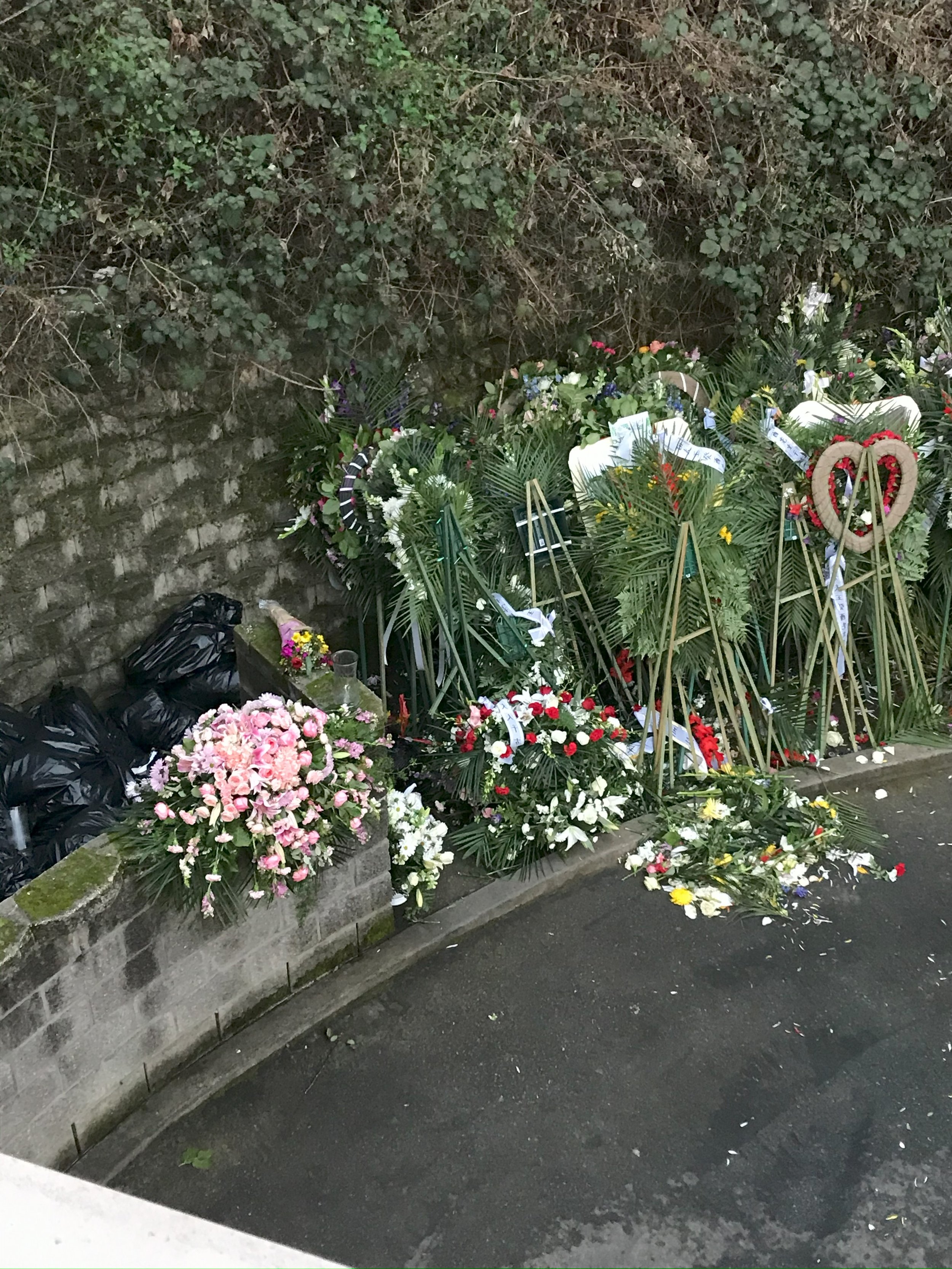

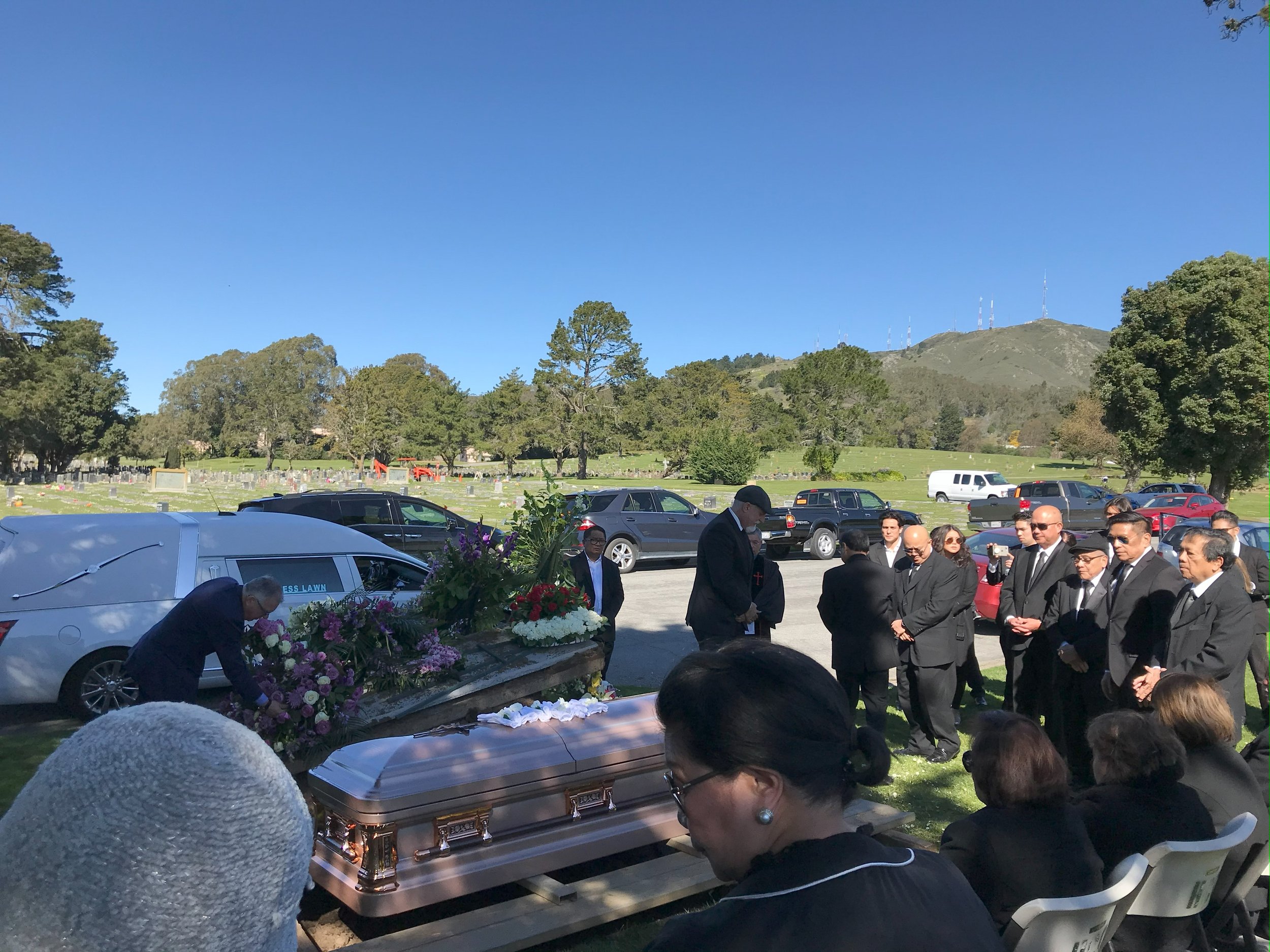
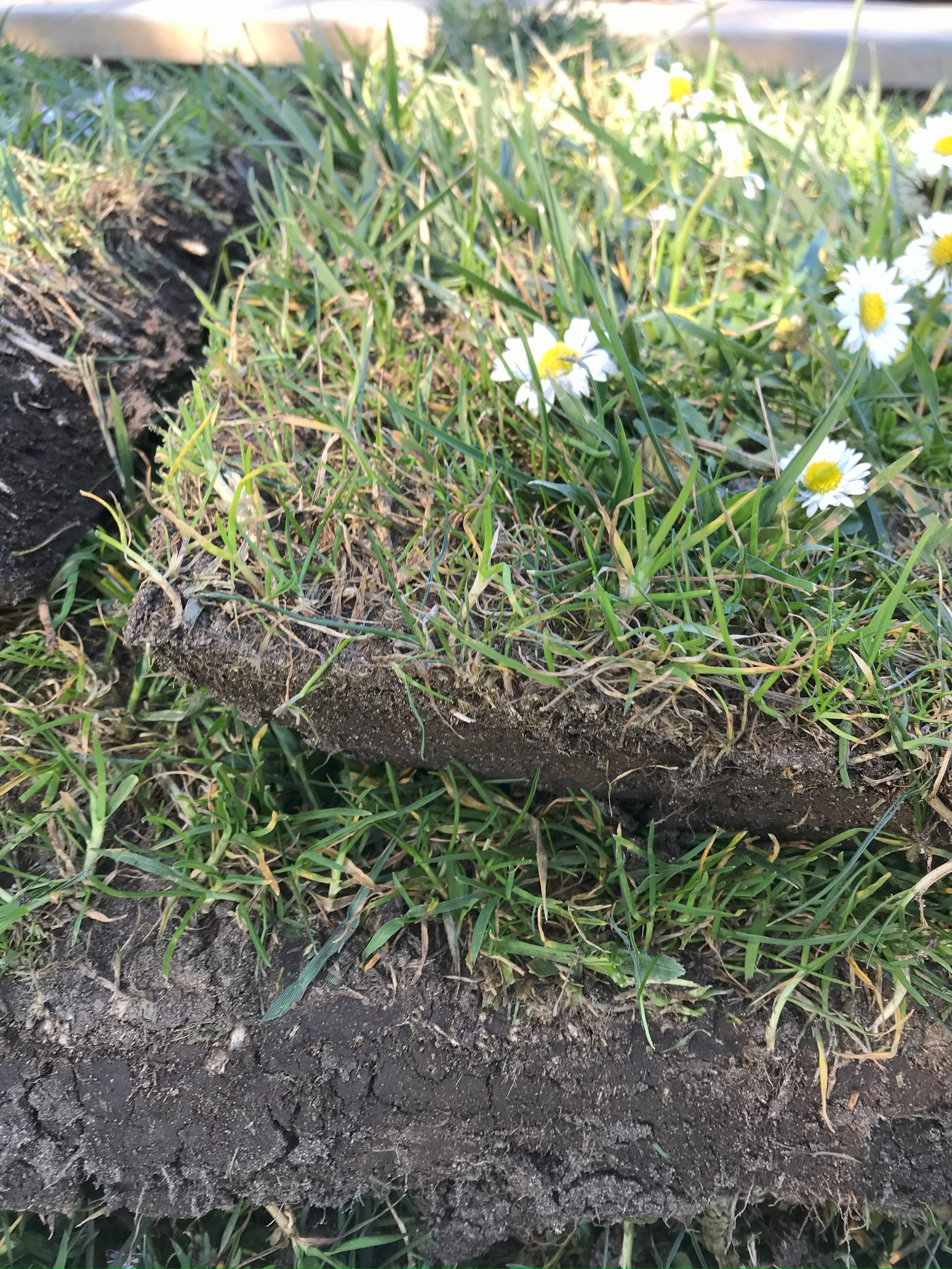
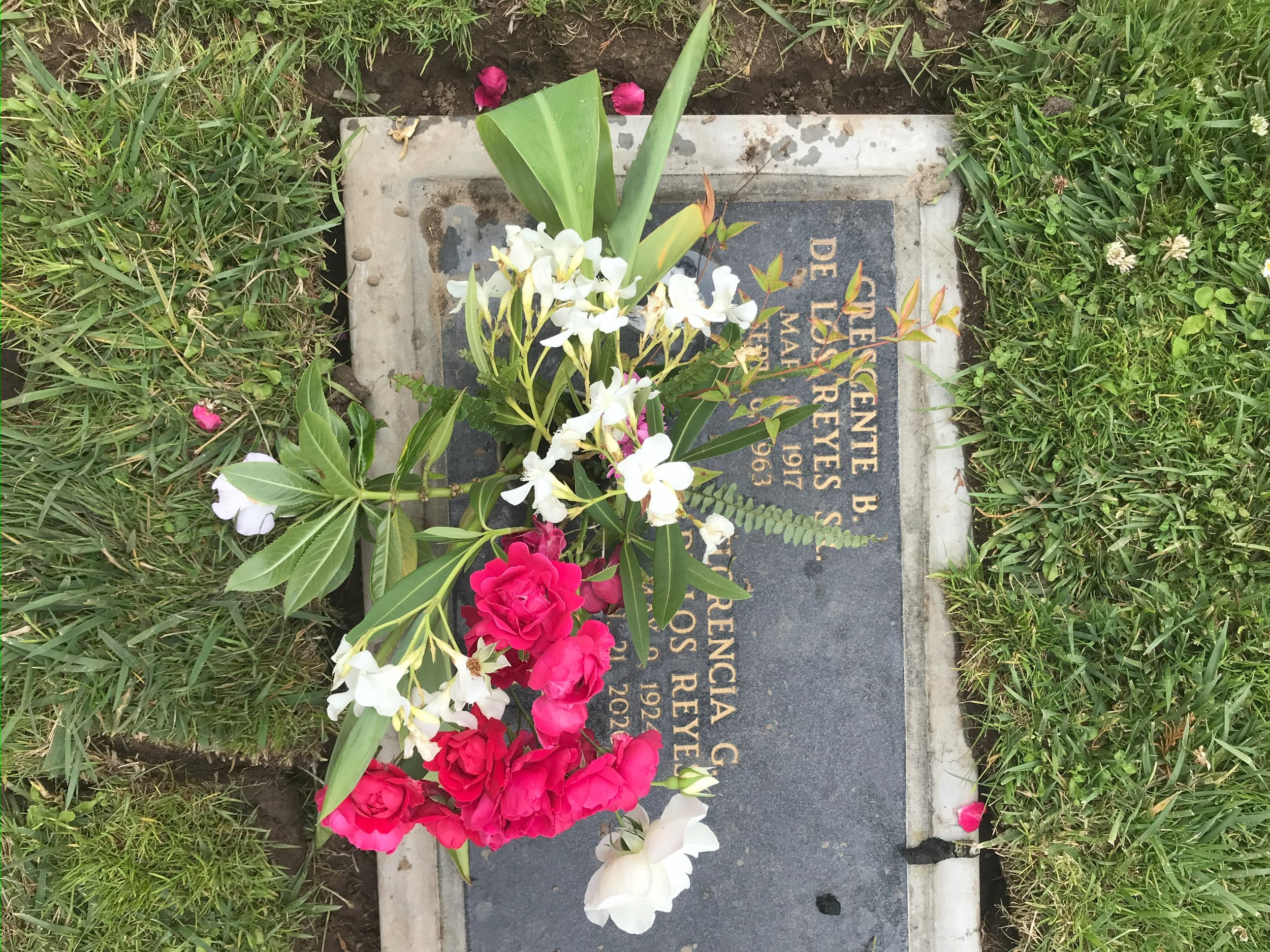

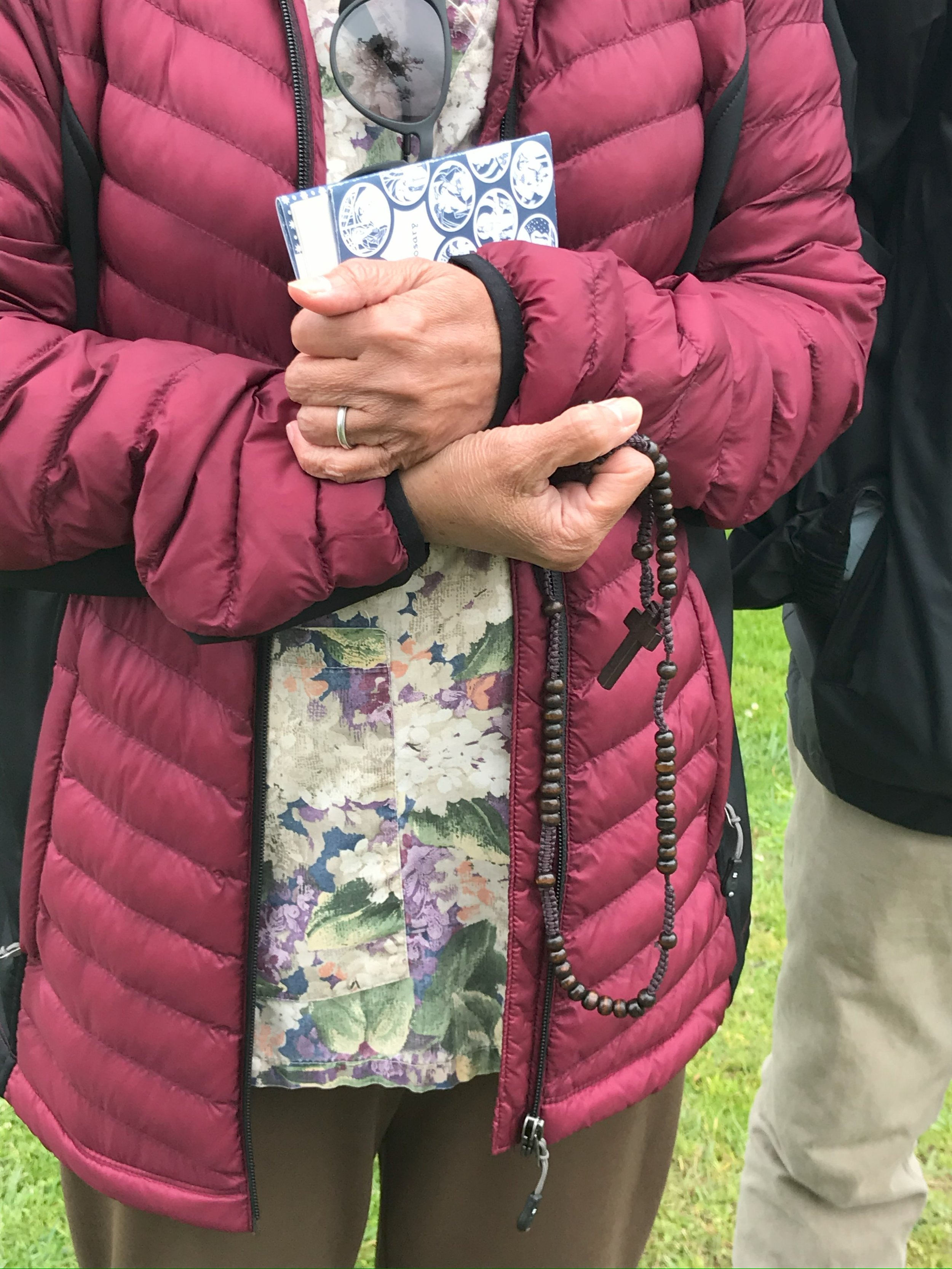
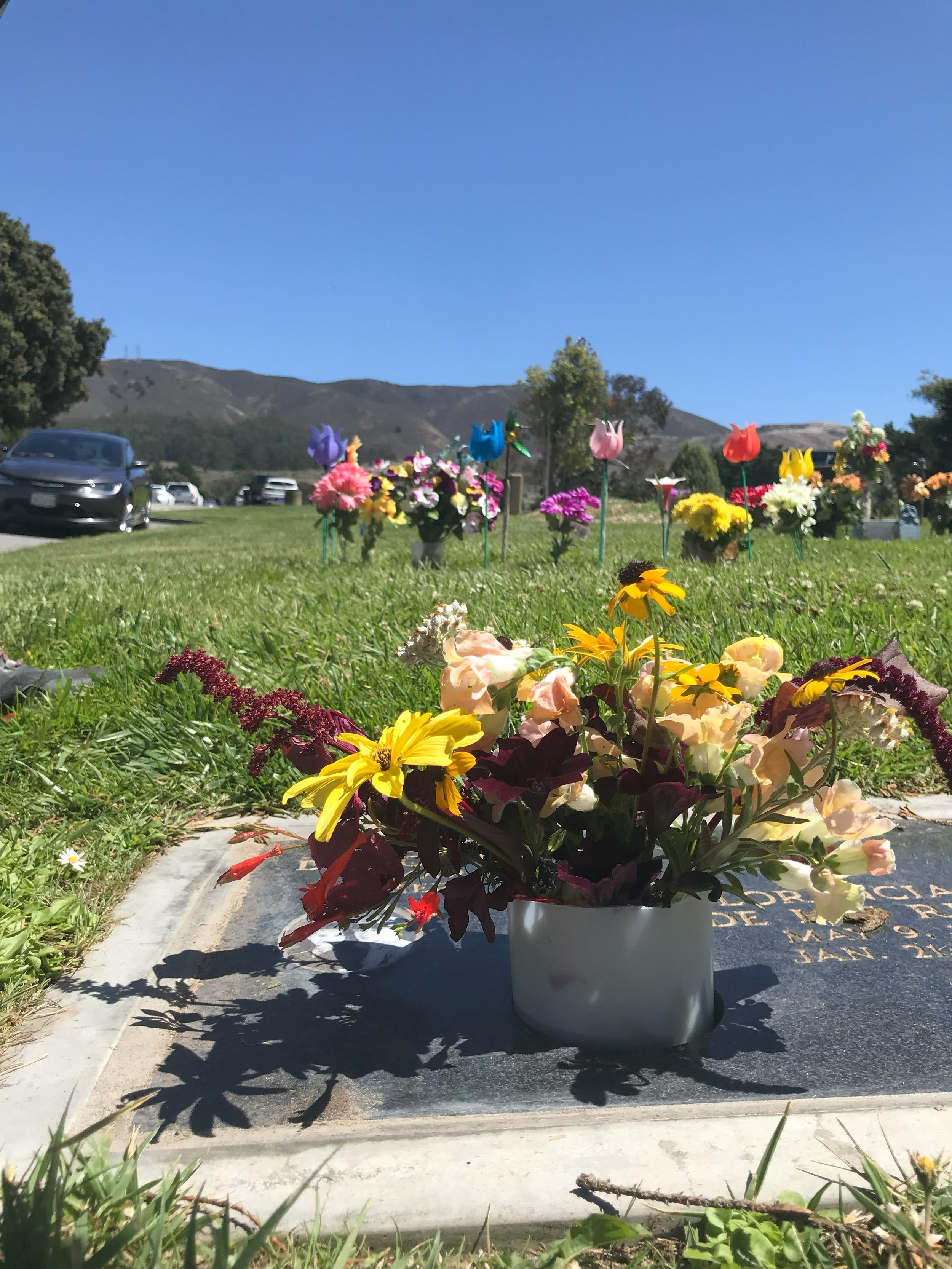
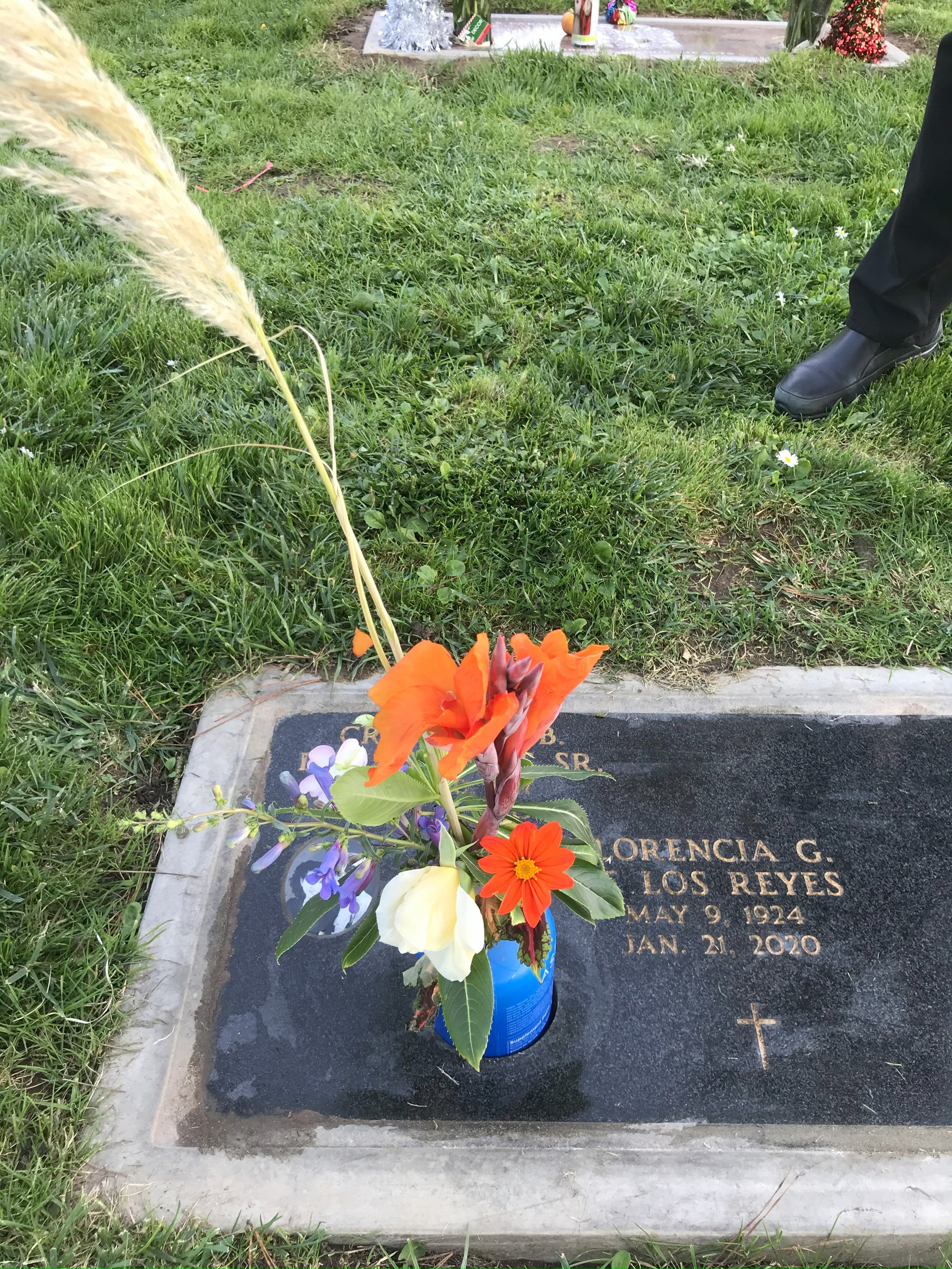
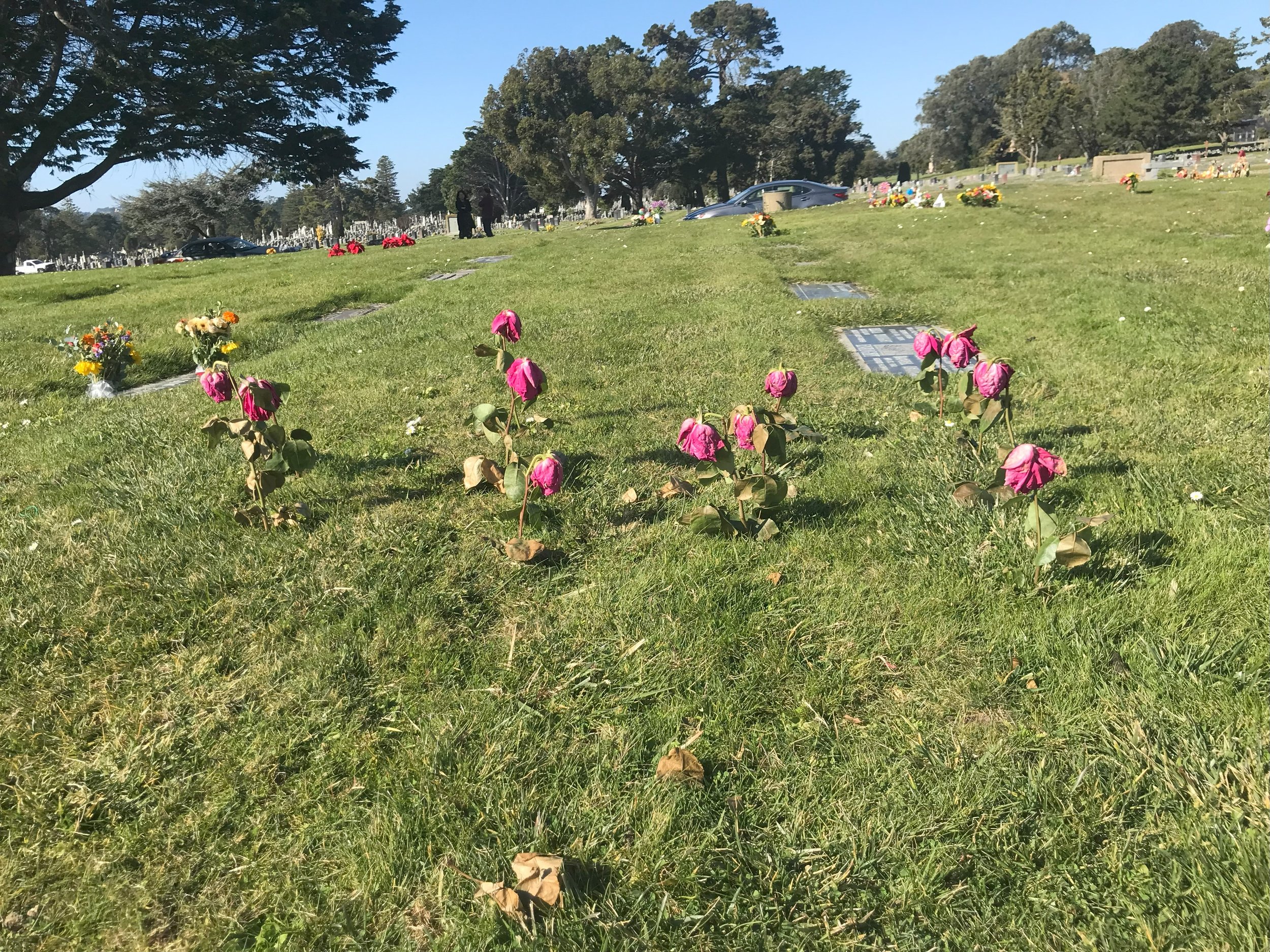
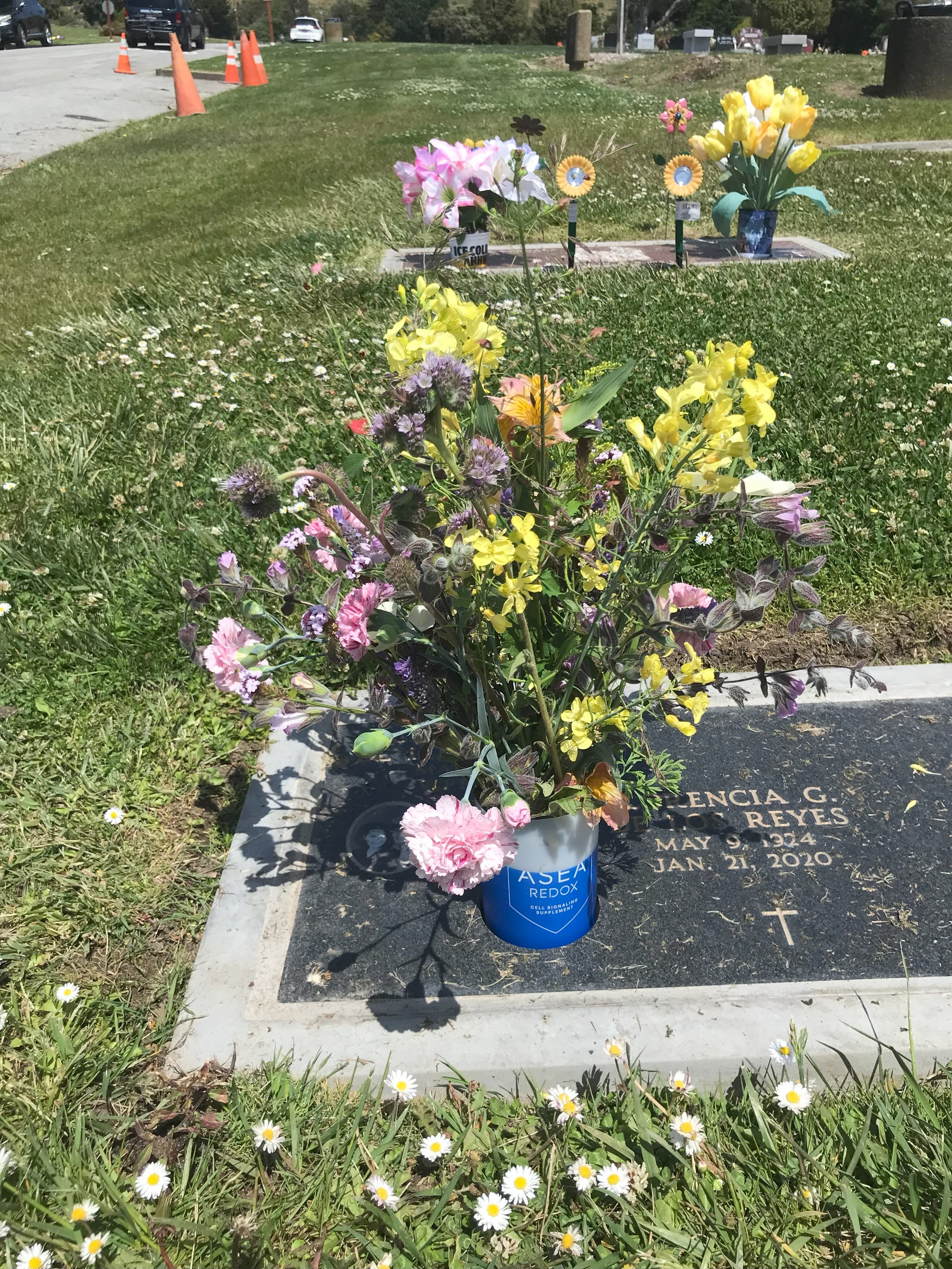
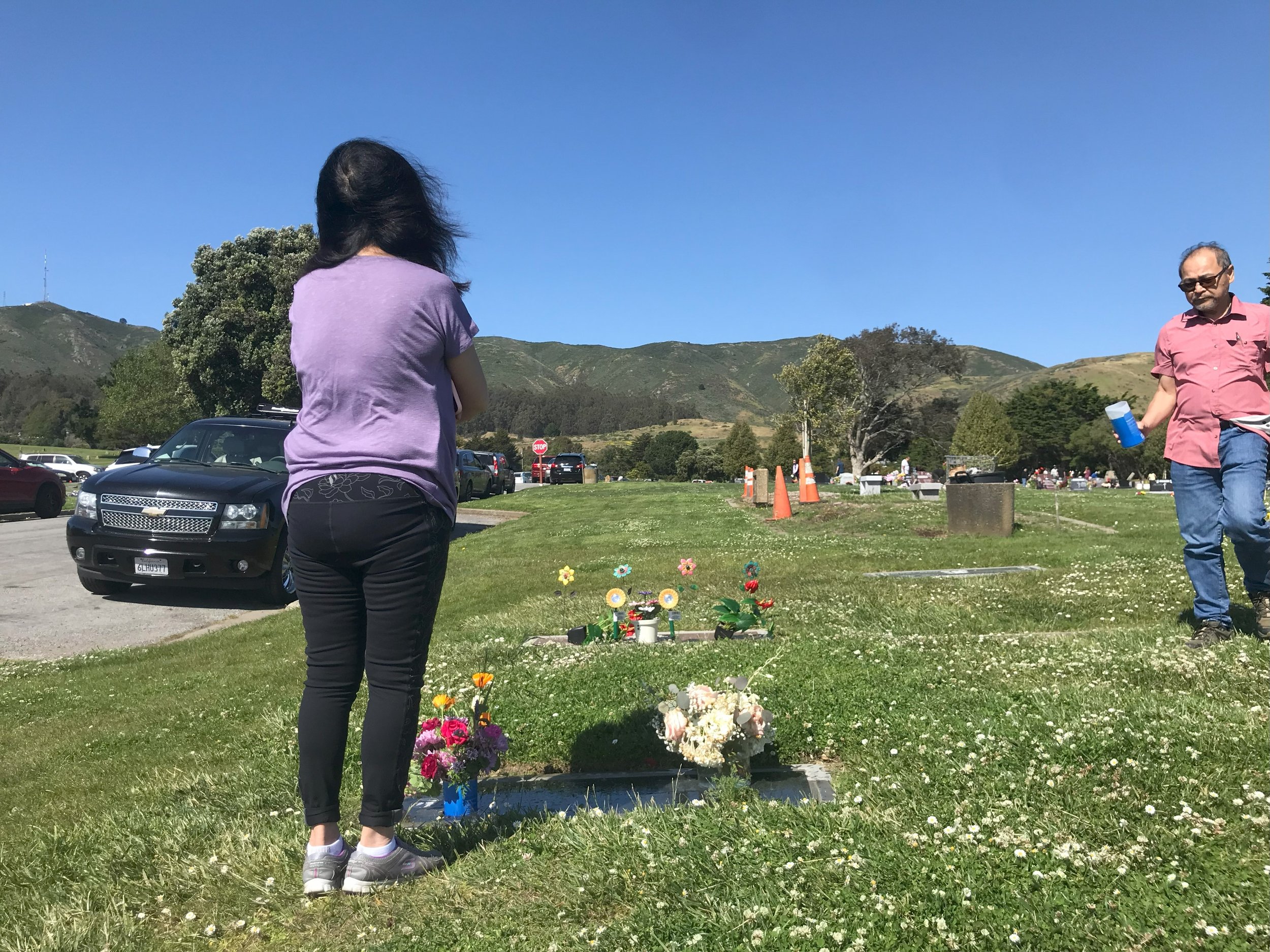
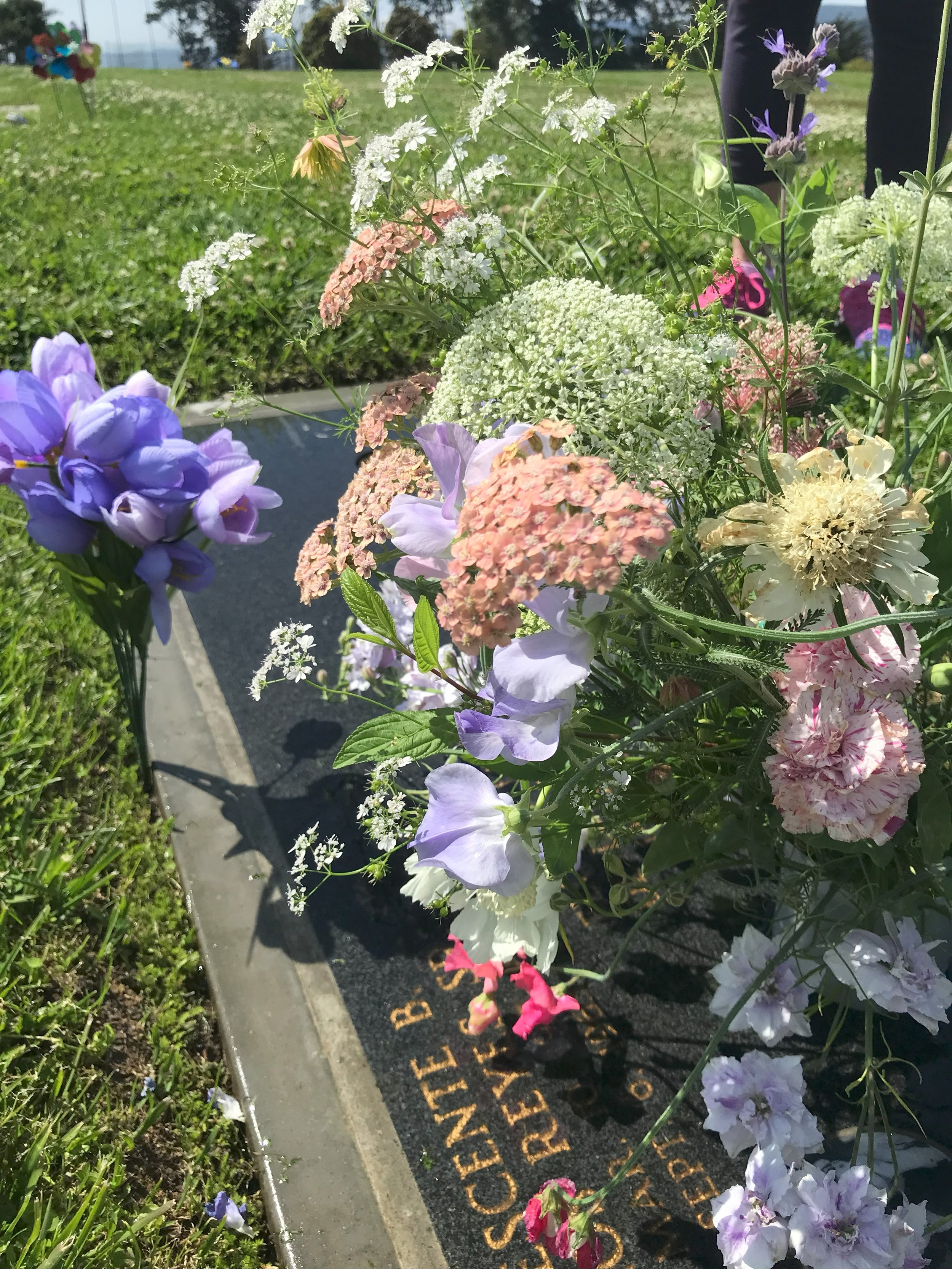

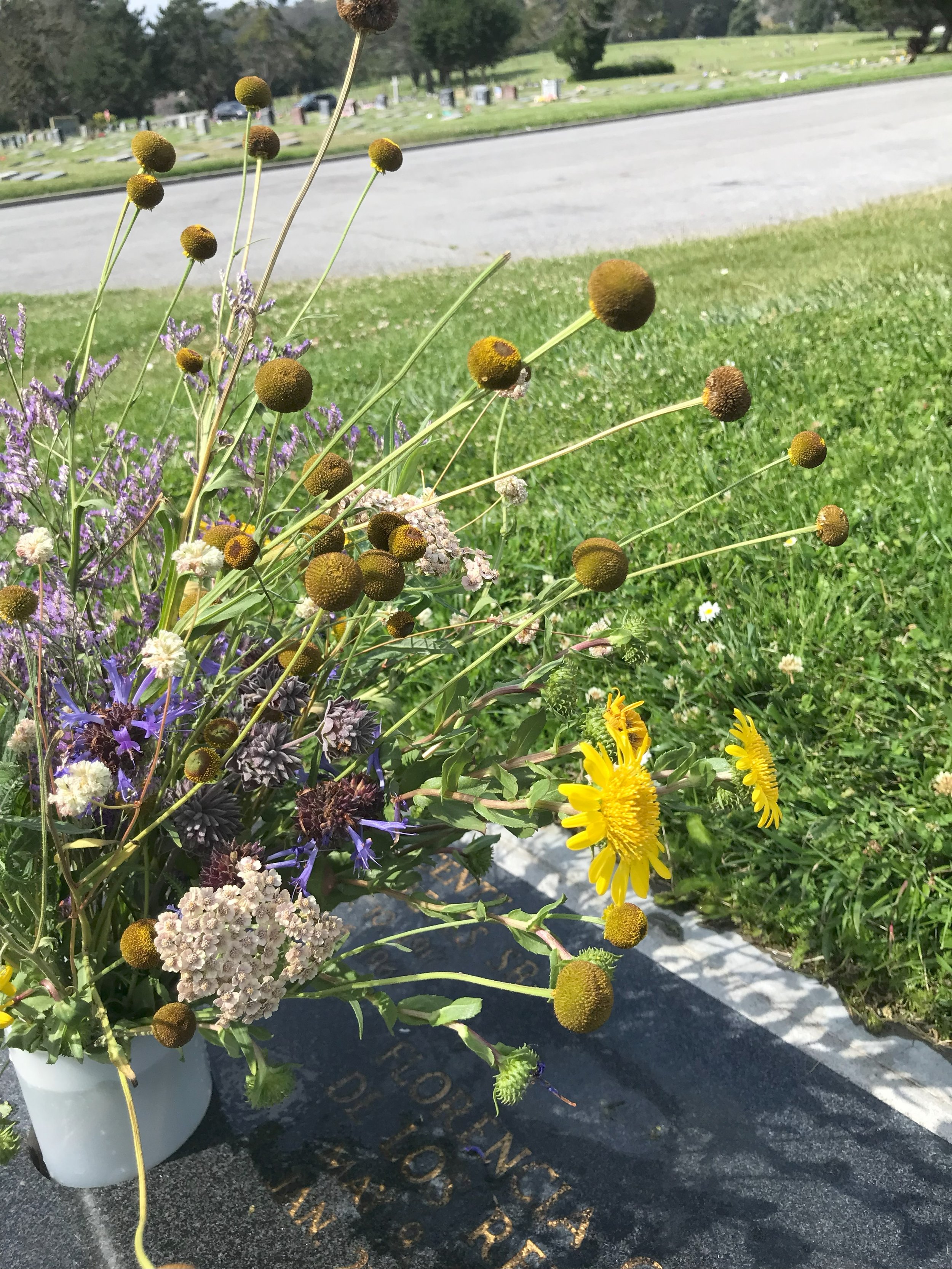
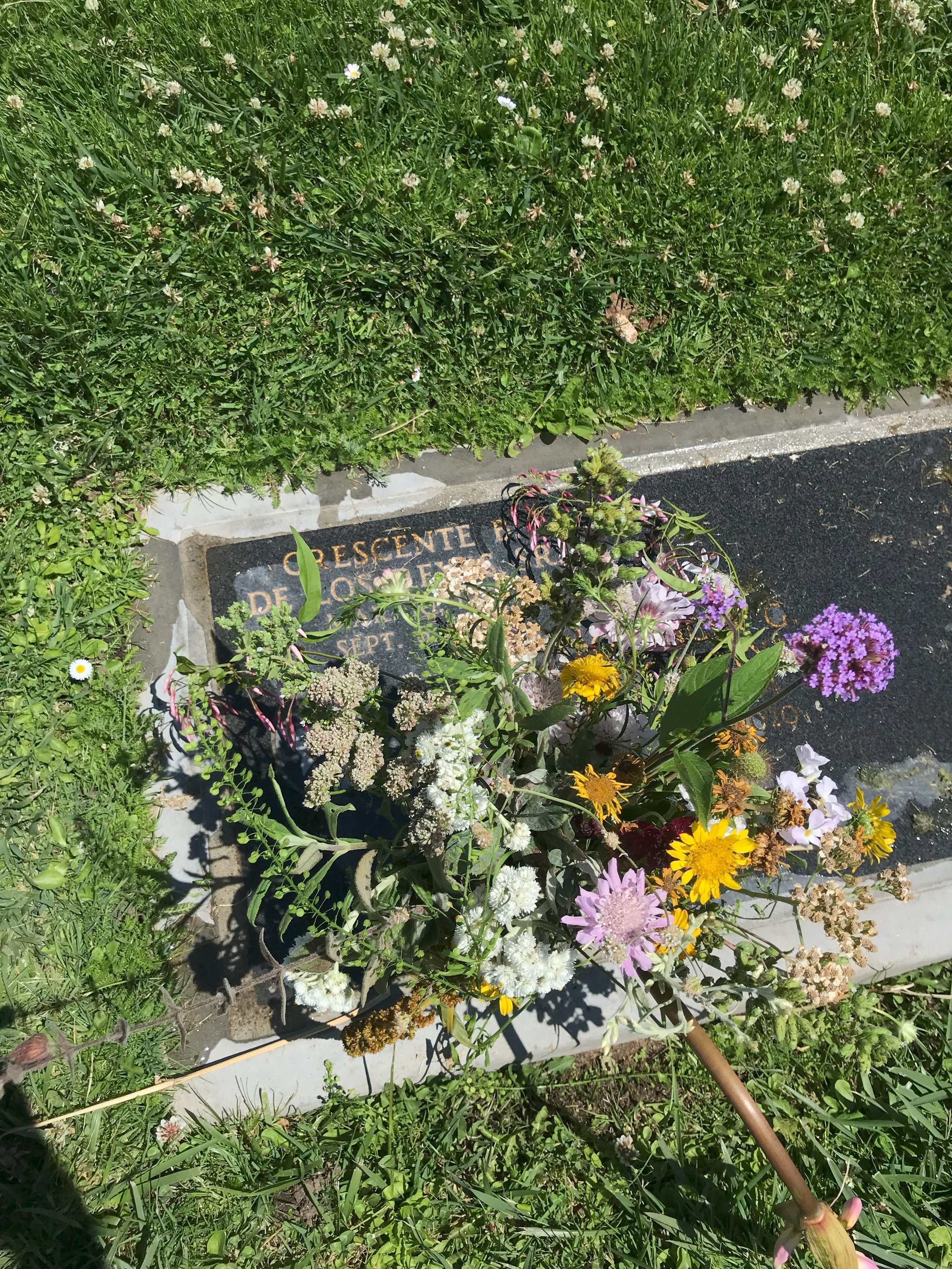
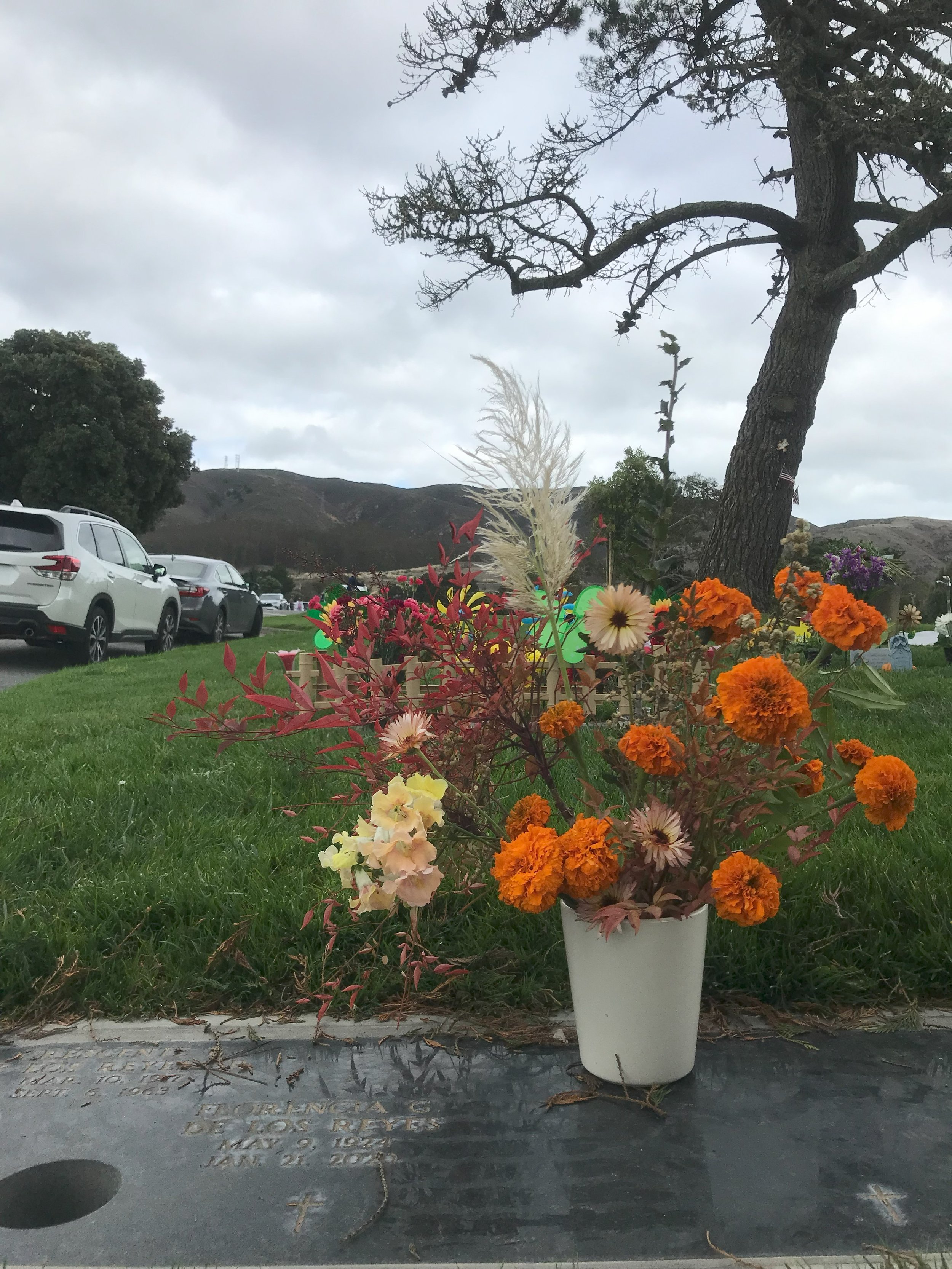
While the cemetery offers a place of solace and connection to loved ones, the history of its landscape and maintenance practices are deeply embedded in colonial traditions. Its manicured lawnscape is divorced from the complex native ecology of the adjacent San Bruno Mountain. Before a body is committed to the grave Catholic Filipinos recite: “we therefore commit this body to the ground, earth to earth, ashes to ashes, dust to dust; in sure and certain hope of the Resurrection to eternal life”. What does this saying mean when one’s bodily form sits preserved in a box in a sort of in-between space amidst a sea of mowed and chemically enriched lawn?
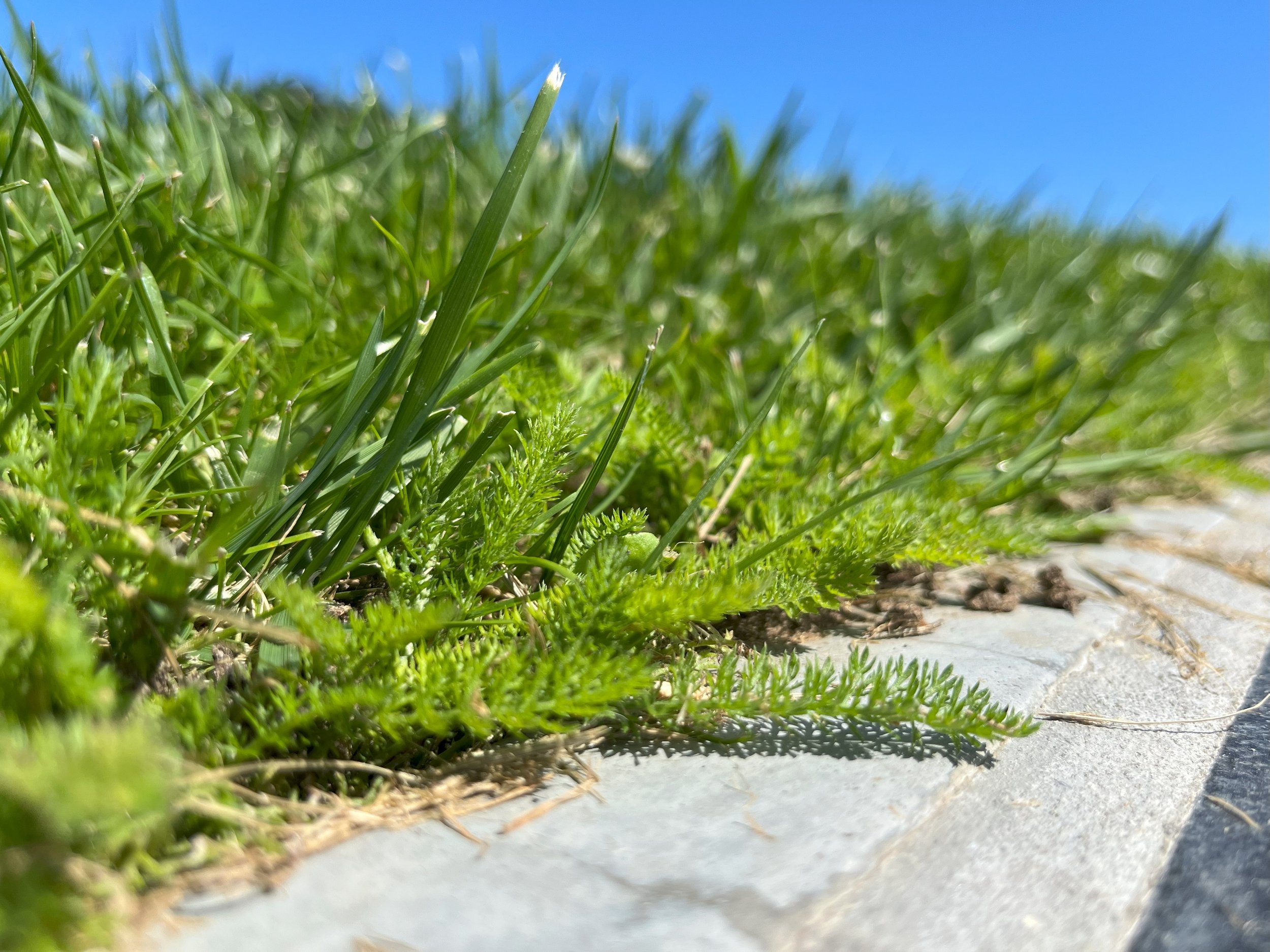
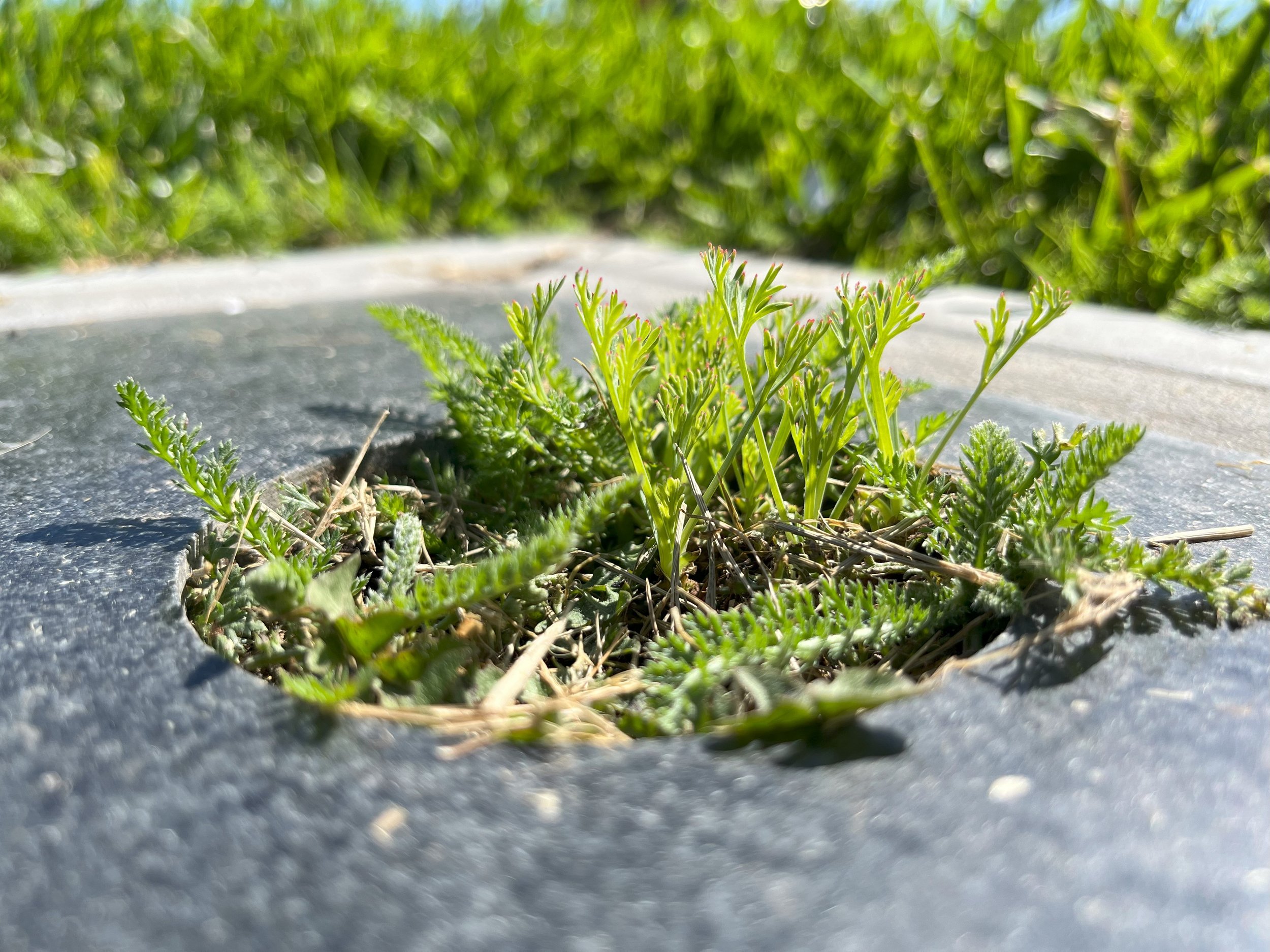
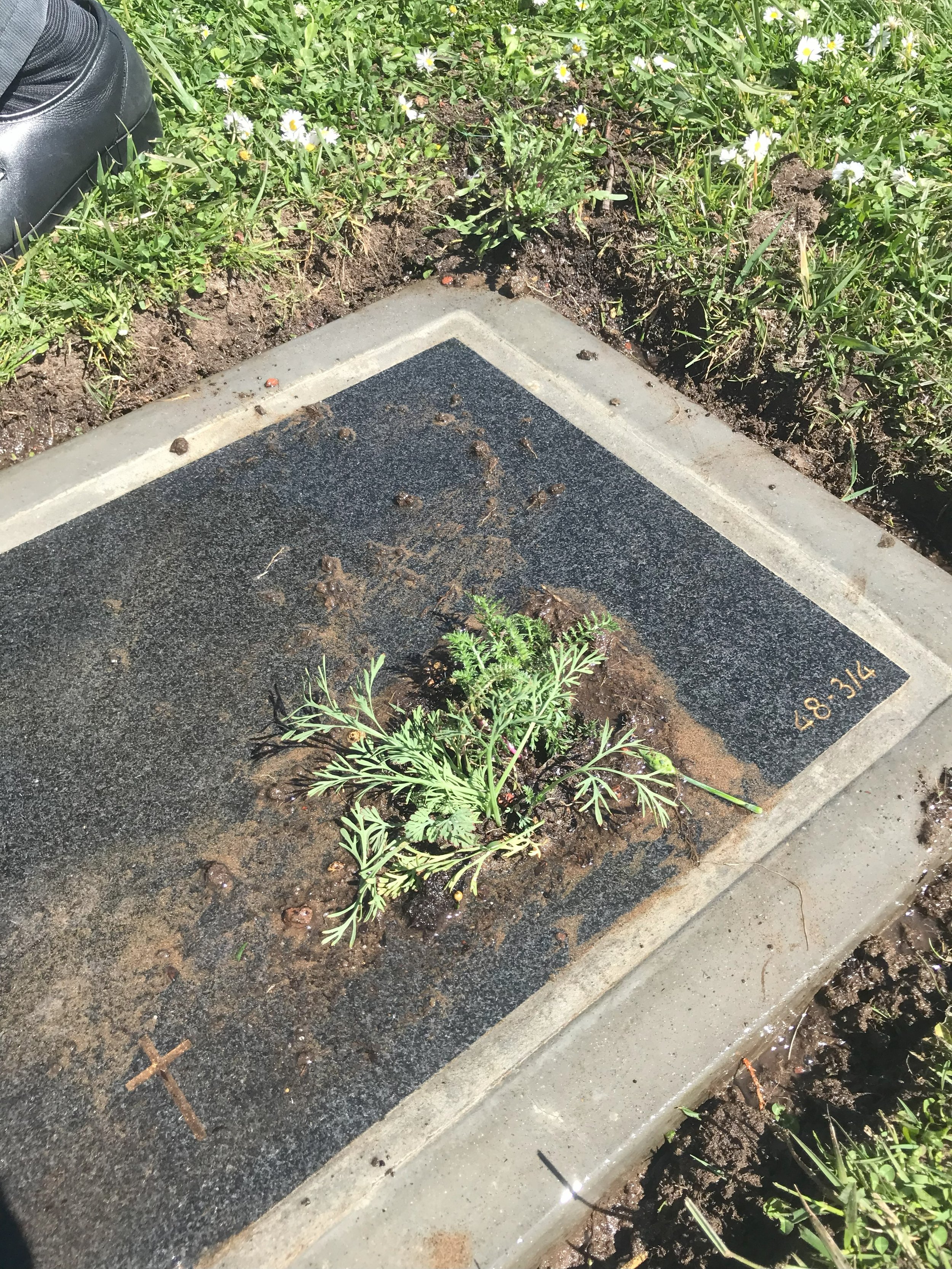
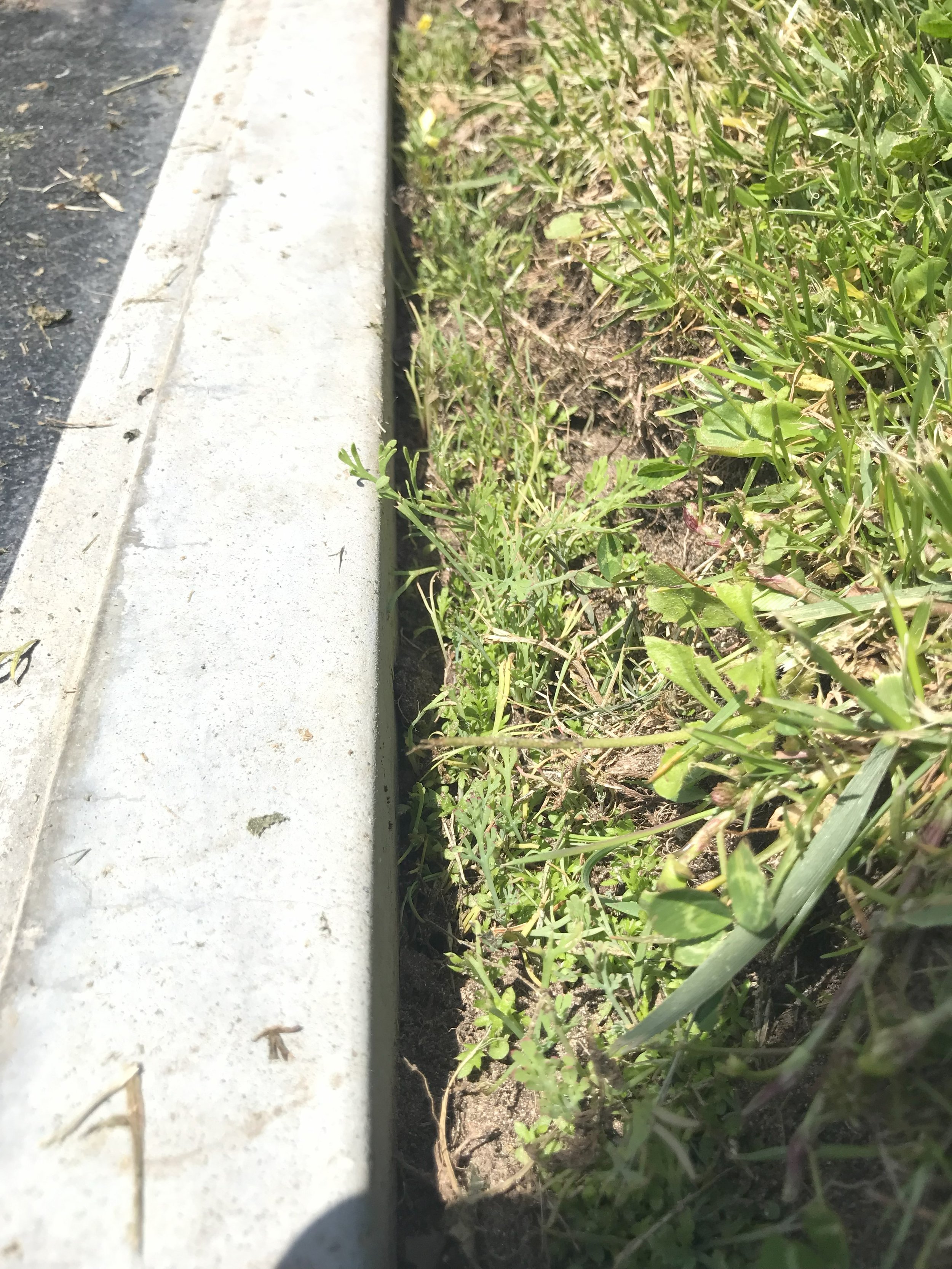
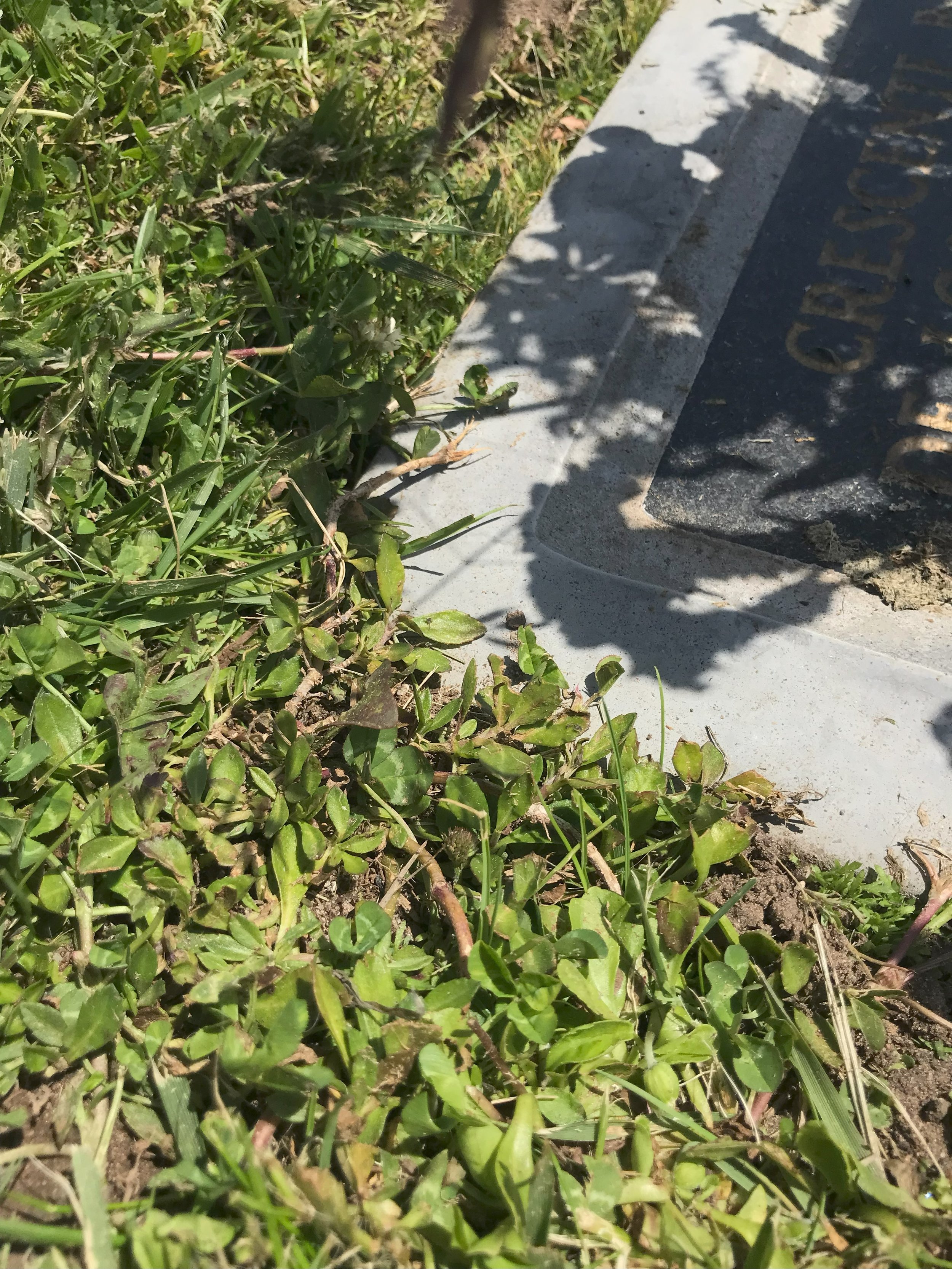
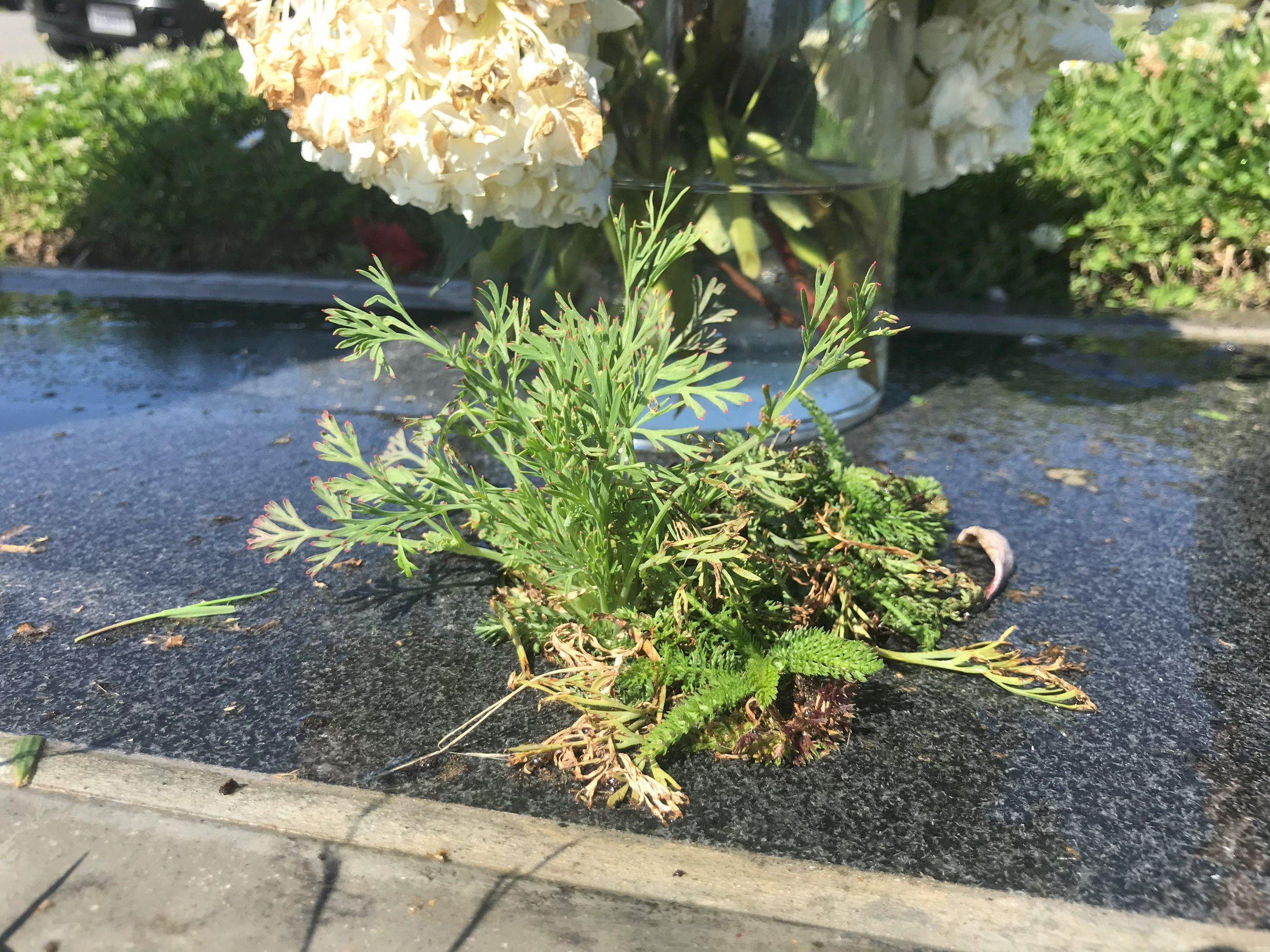
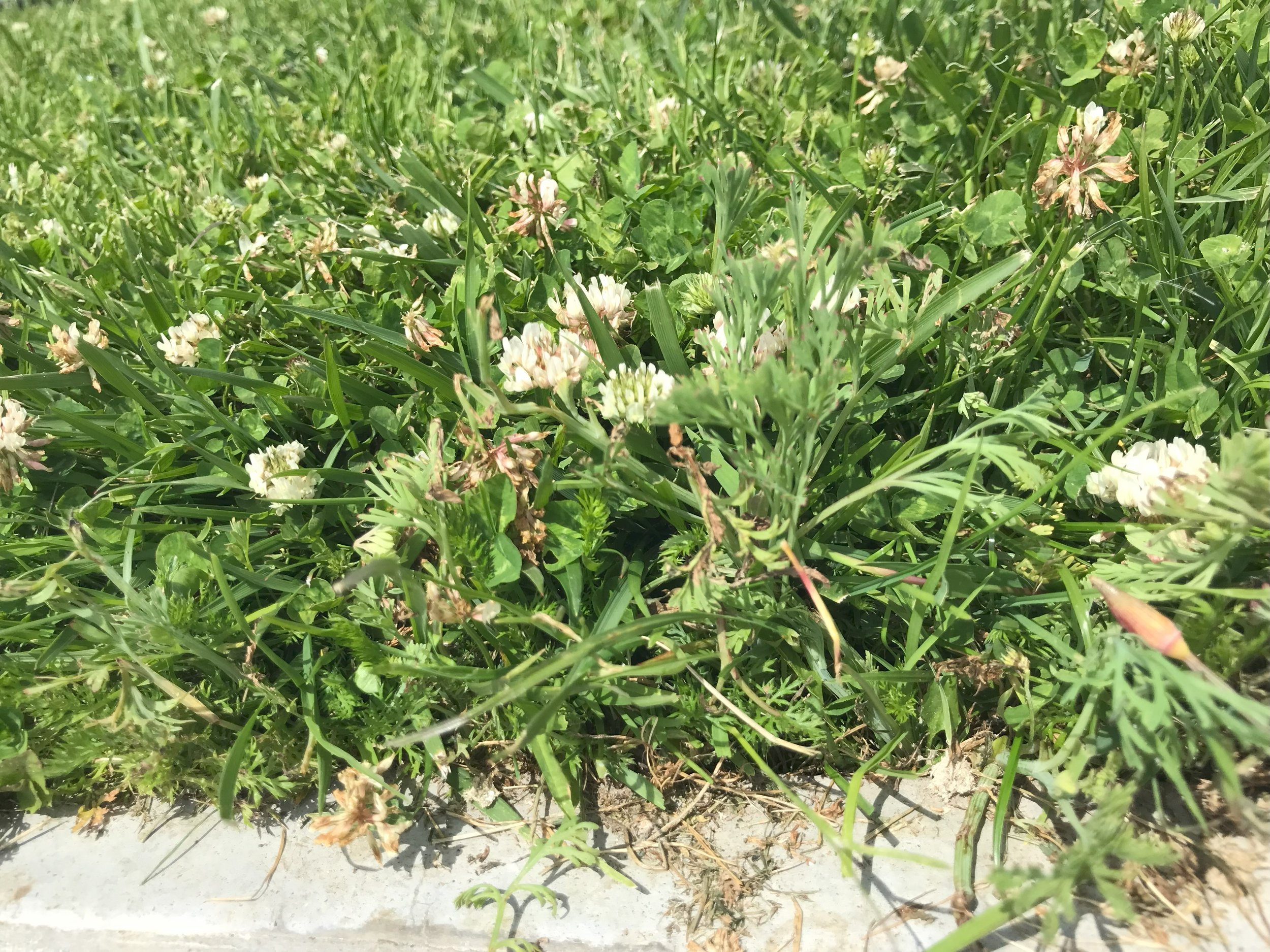
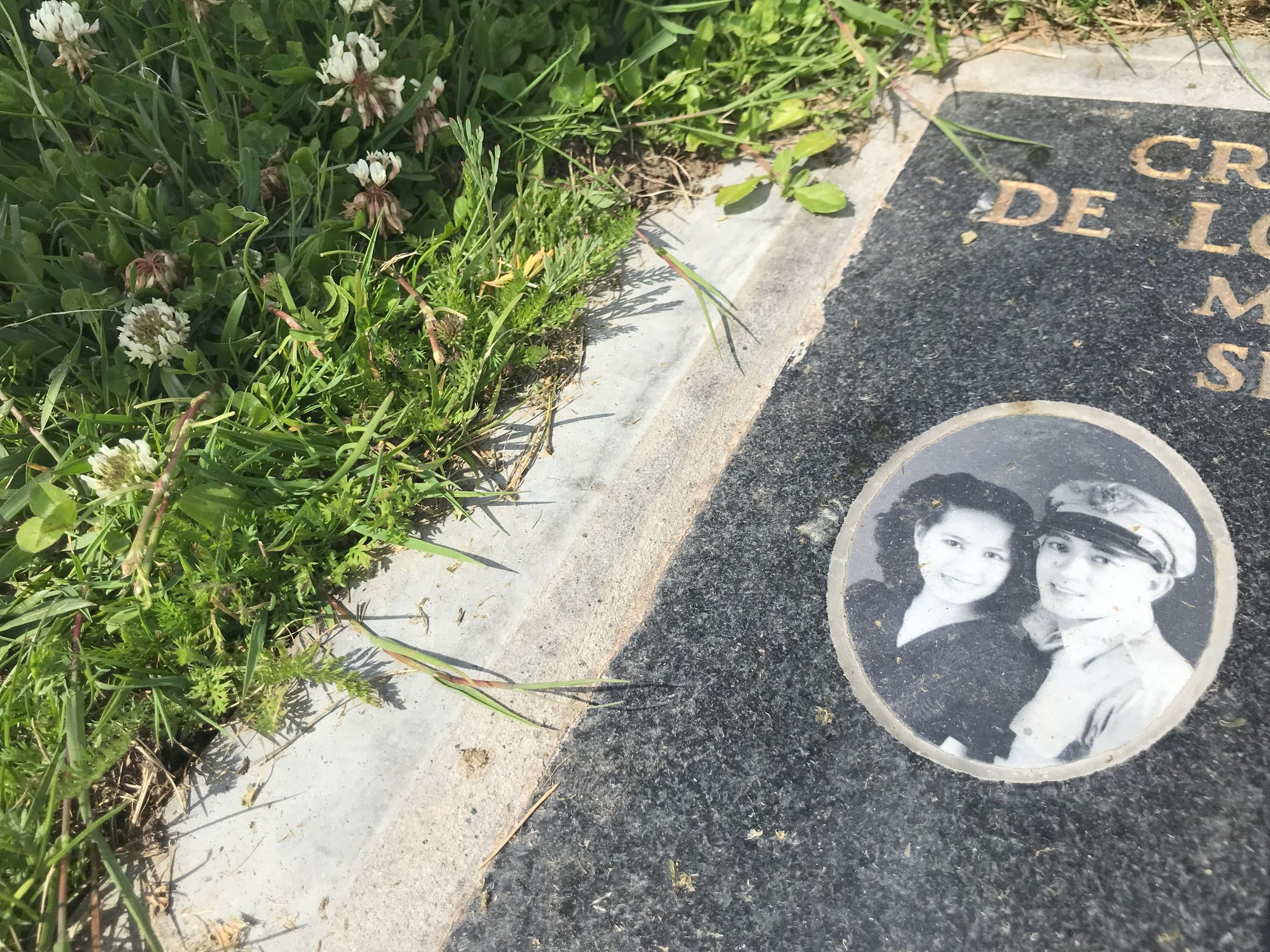
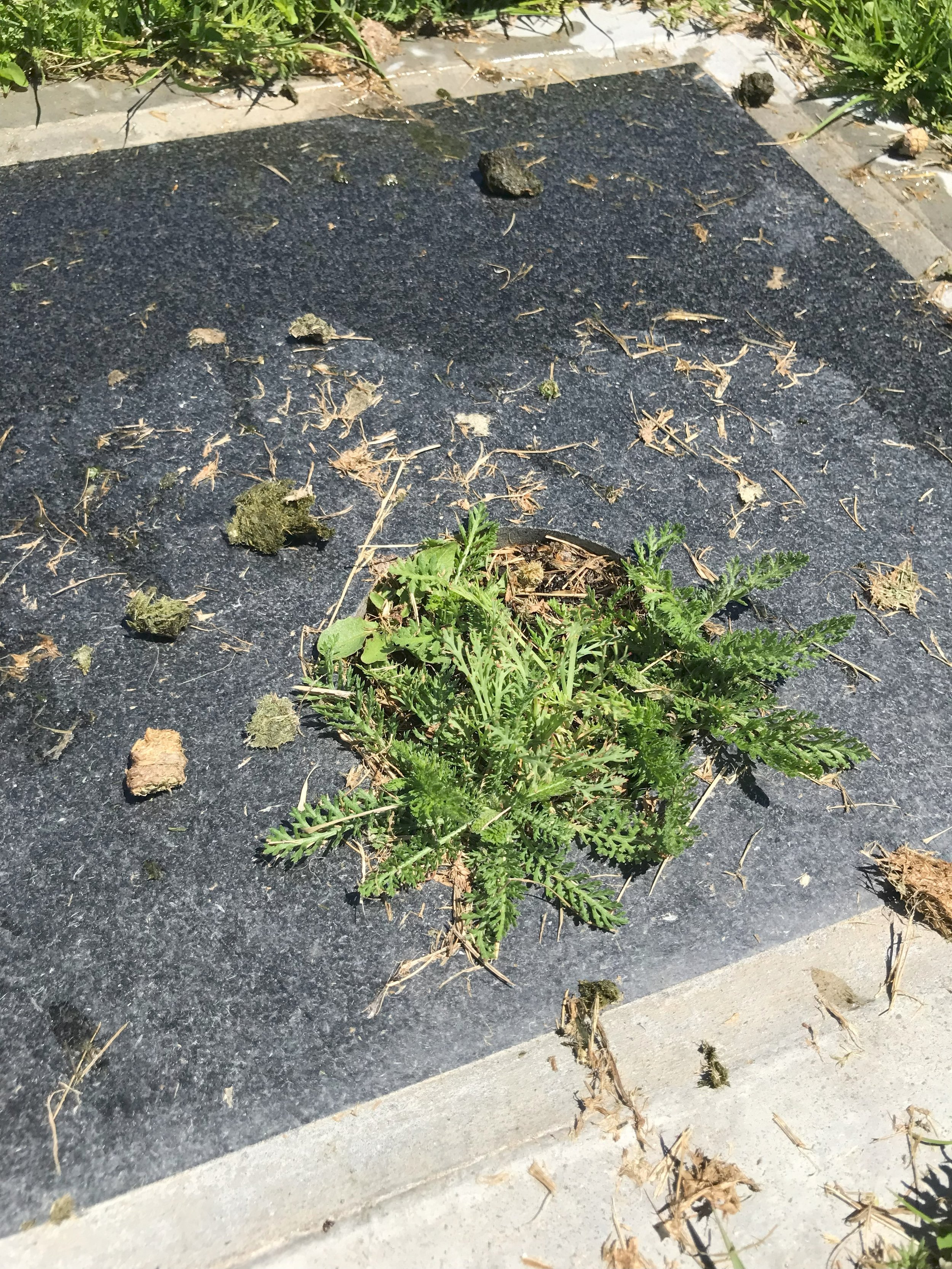
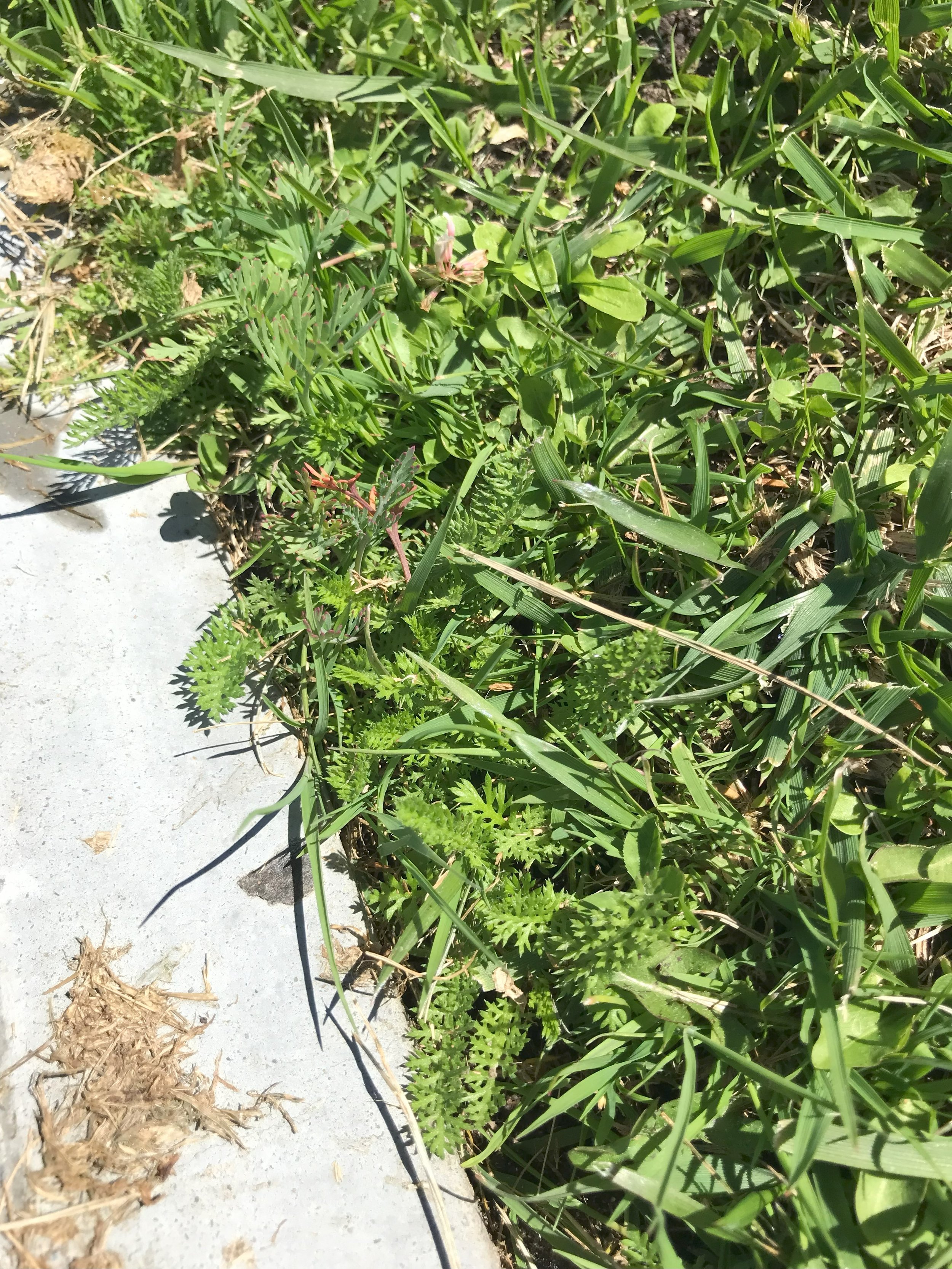
Part of this personal practice is disrupting these monocultural lawnscapes of cemeteries. In contrast to the excess of disposable plastic flowers and Trader Joe’s bouquets, I wanted to introduce flowers that move the space towards biodiversity and ecological value. With subtle introductions of yarrow (Achillea millefolium) and CA poppy (Eschscholzia californica) seeds at the edges of my grandma’s plot, both covert herbaceous species that can handle a mowing, I am beginning to invite local natives into the space and provide blooms in perpetuity. This ongoing practice is thinking of the cemetery landscape as indistinguishable from the mountain and its beauty. From dust to dust and dirt to dirt: the garden is embracing the idea that we can bring loved ones and ourselves closer in union to the divine and we can nurture life anew.
Religious ritual is embedded in Filipino culture. Over 300 years of colonization under the Spanish Empire, meant that Christianity was forcibly ingrained into the very traditions and practices of Filipinos today. The migration of Filipinos to Daly City cannot be divorced from the inherent religious connection, and subsequently the ritual around death. Traditionally, the death of a person is followed by a nine day period of prayers called a novena. In addition, there is a 40 day period of mourning representing the transition of the soul to Heaven, an evocation of the belief that Jesus Christ ascended into heaven 40 days after his death. These prayers often include the reciting of the rosary, a series of mantras meant to move an individual to a state of contemplation on the mysteries of the Catholic faith and to further assist a loved one's transition to Heaven. The final resting grounds of many Filipinos living in Daly City is the modern day necropolis, Colma.
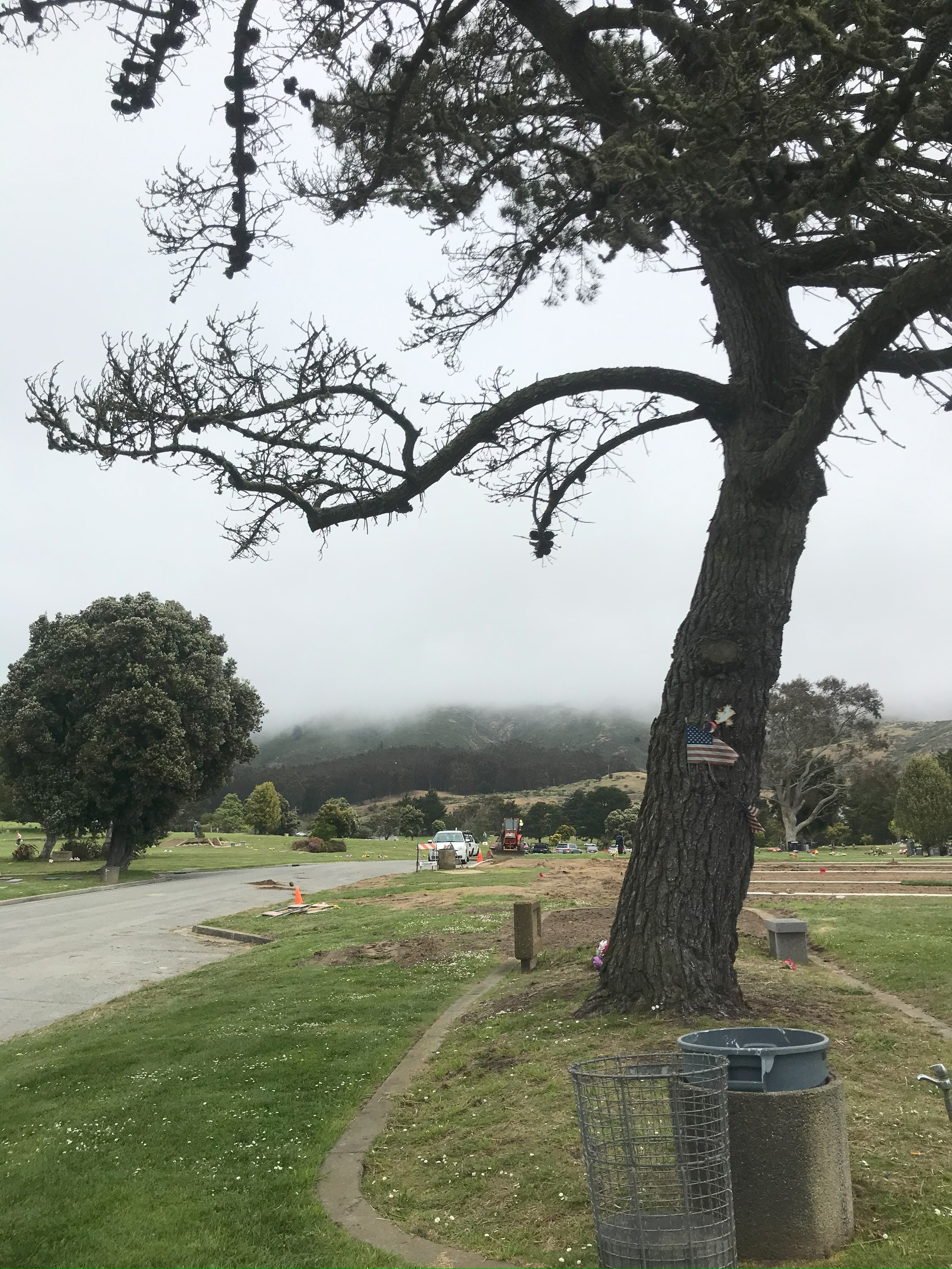
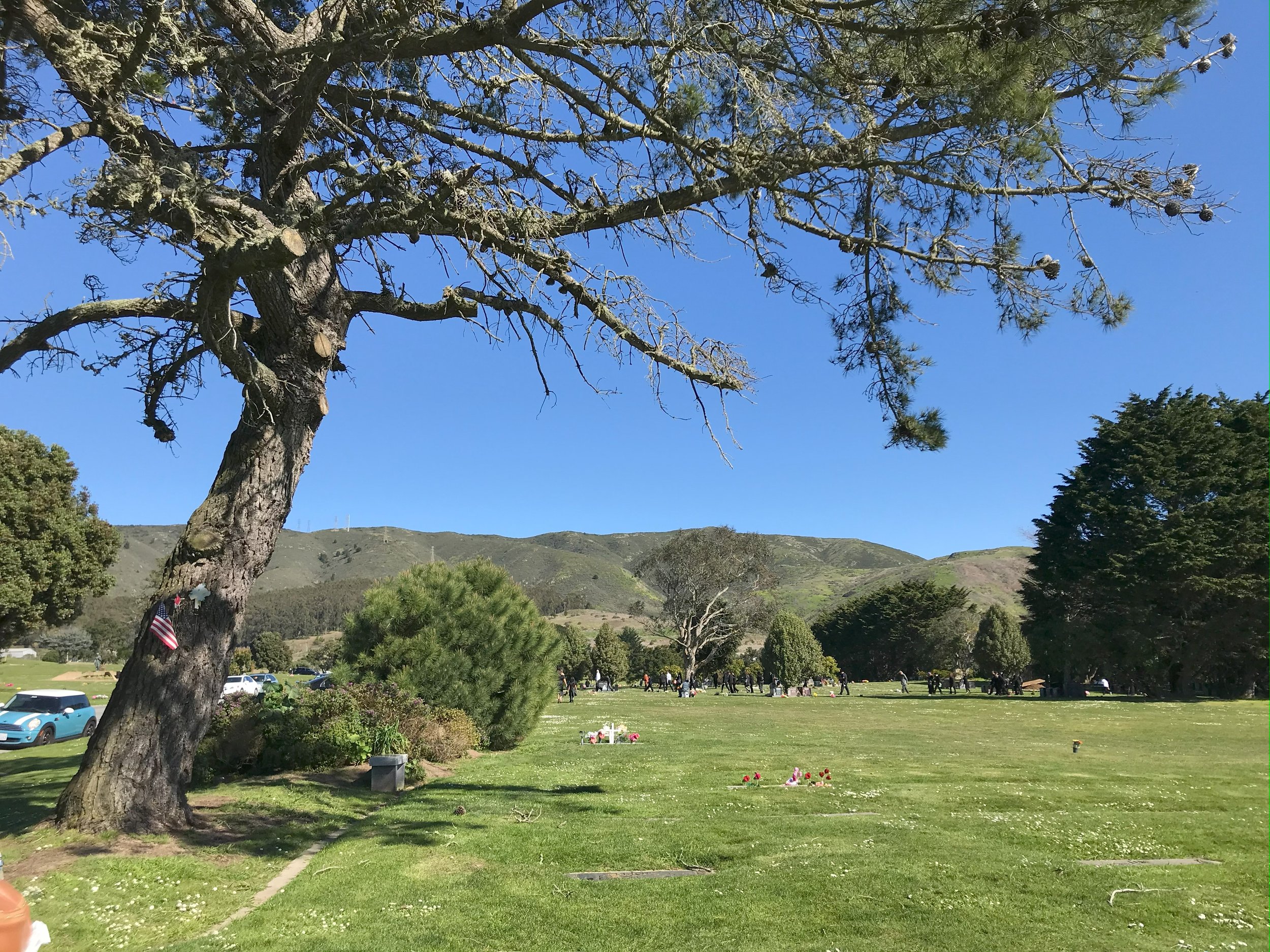
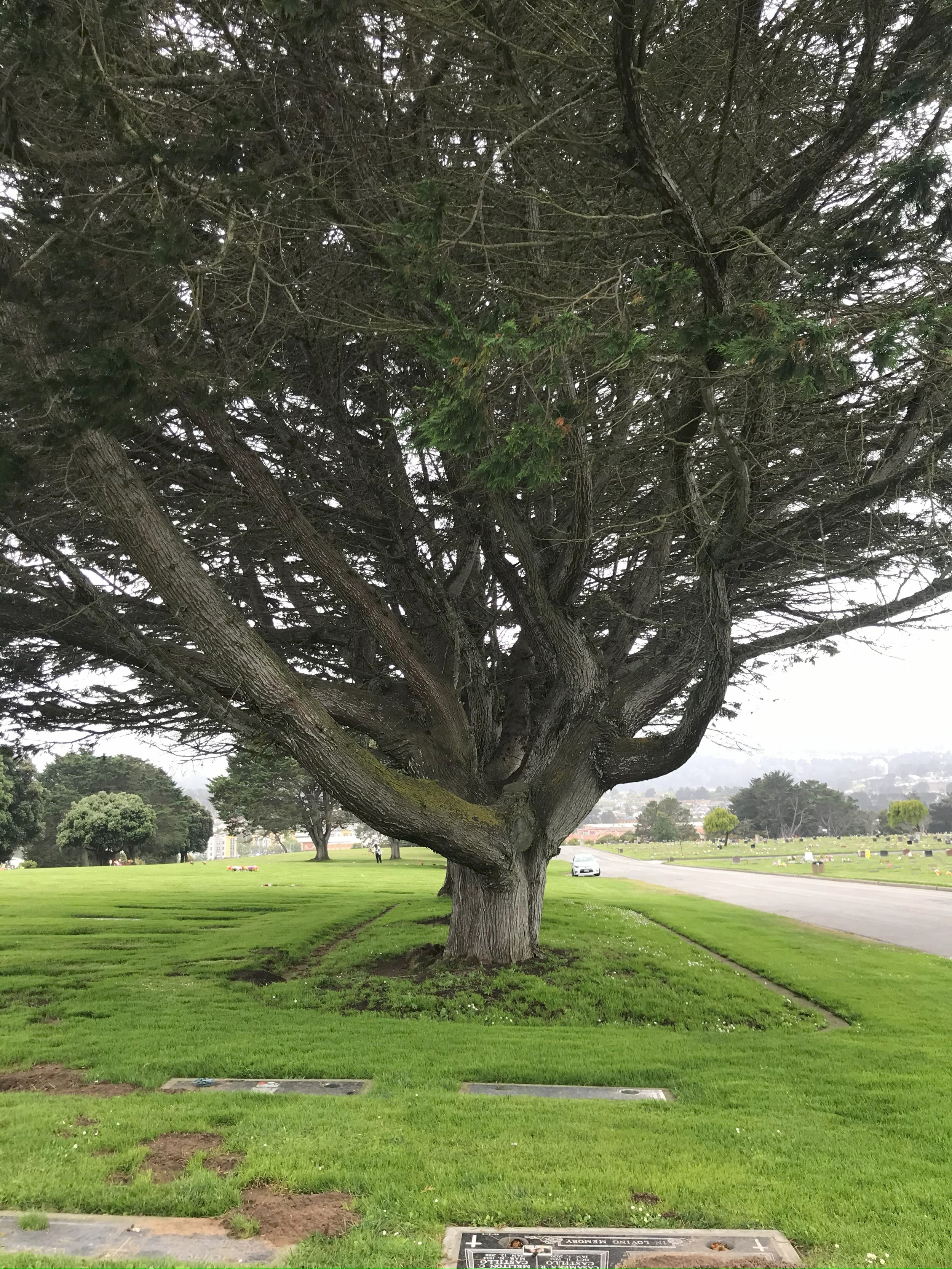

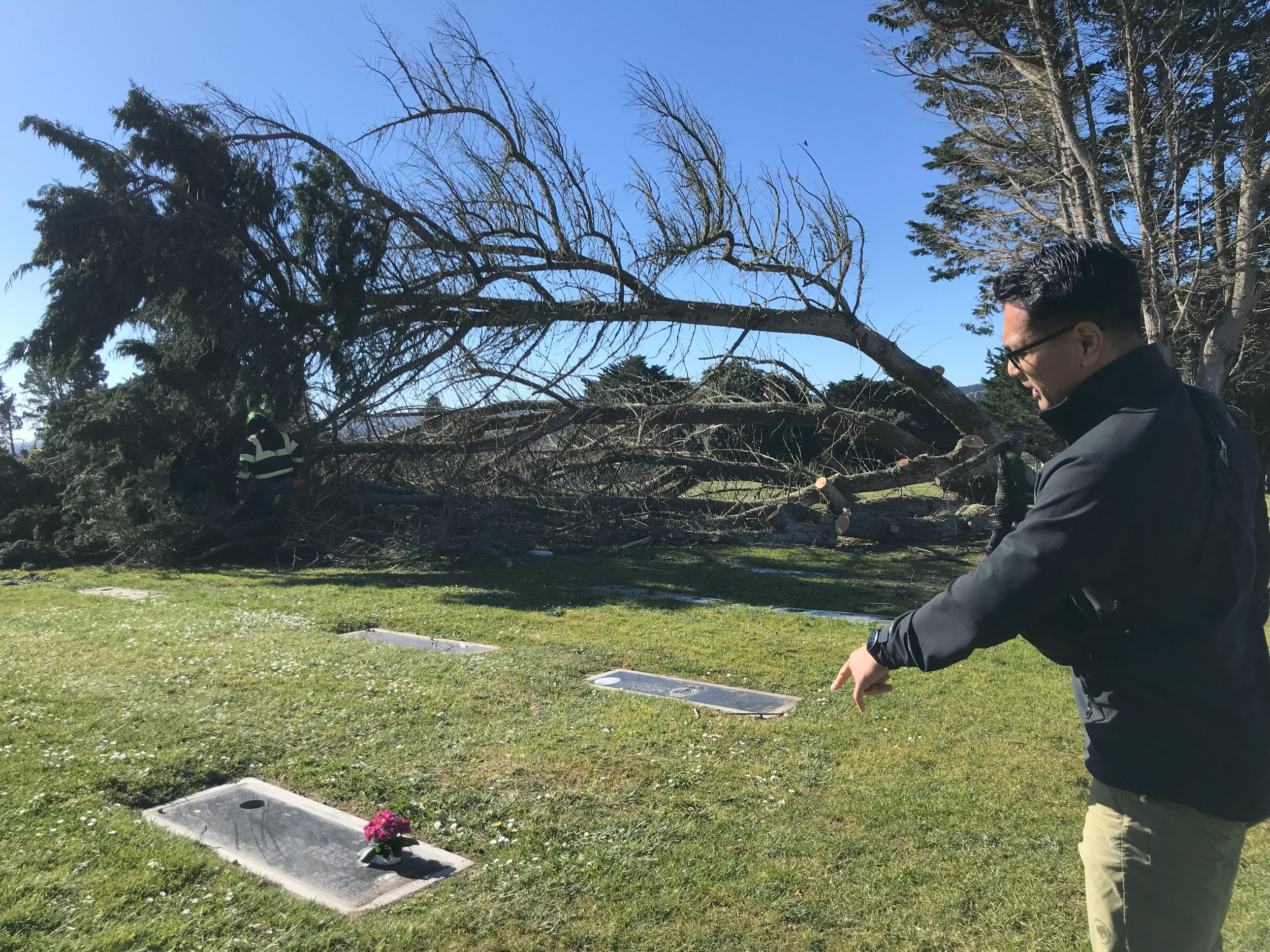
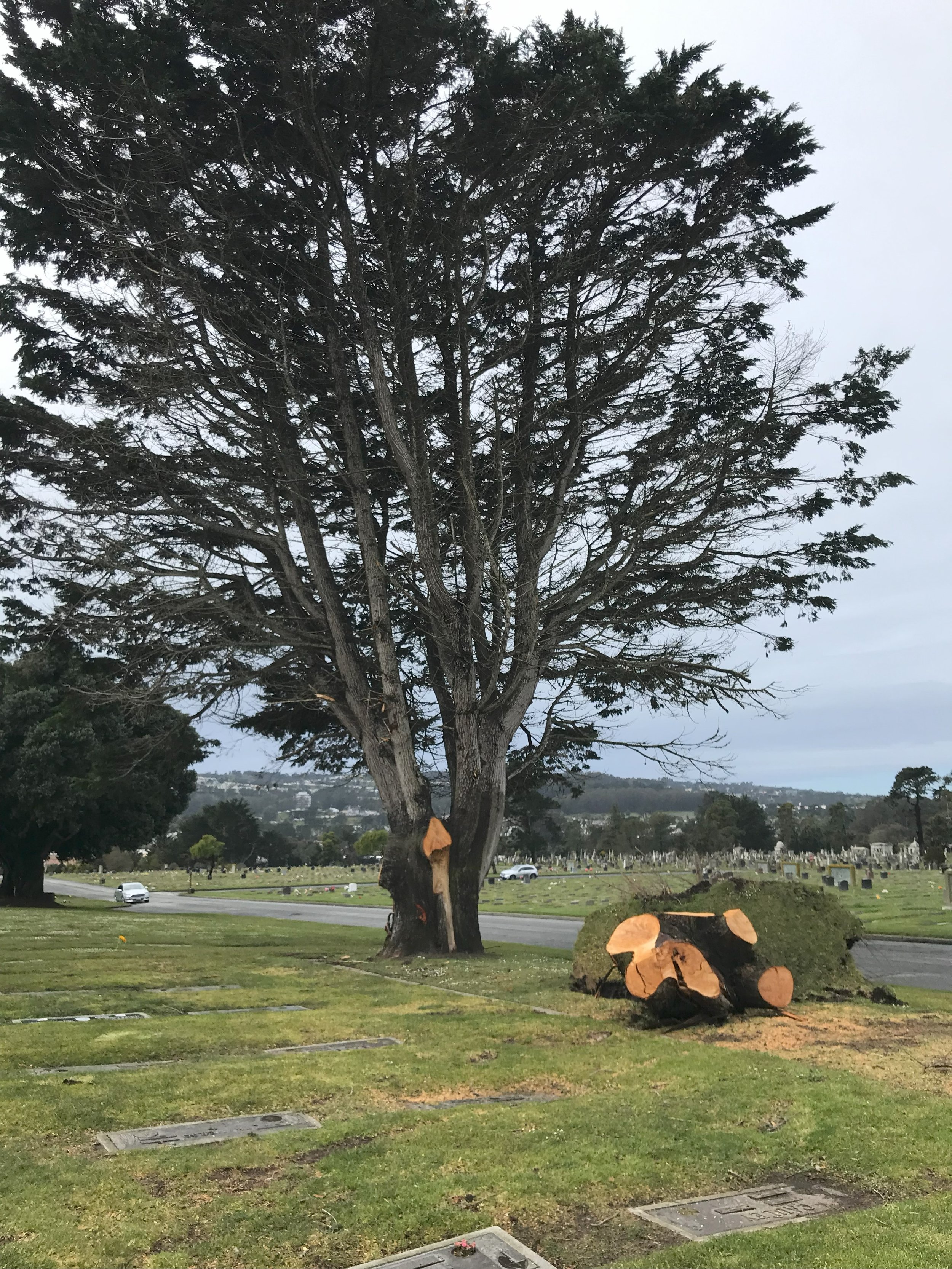
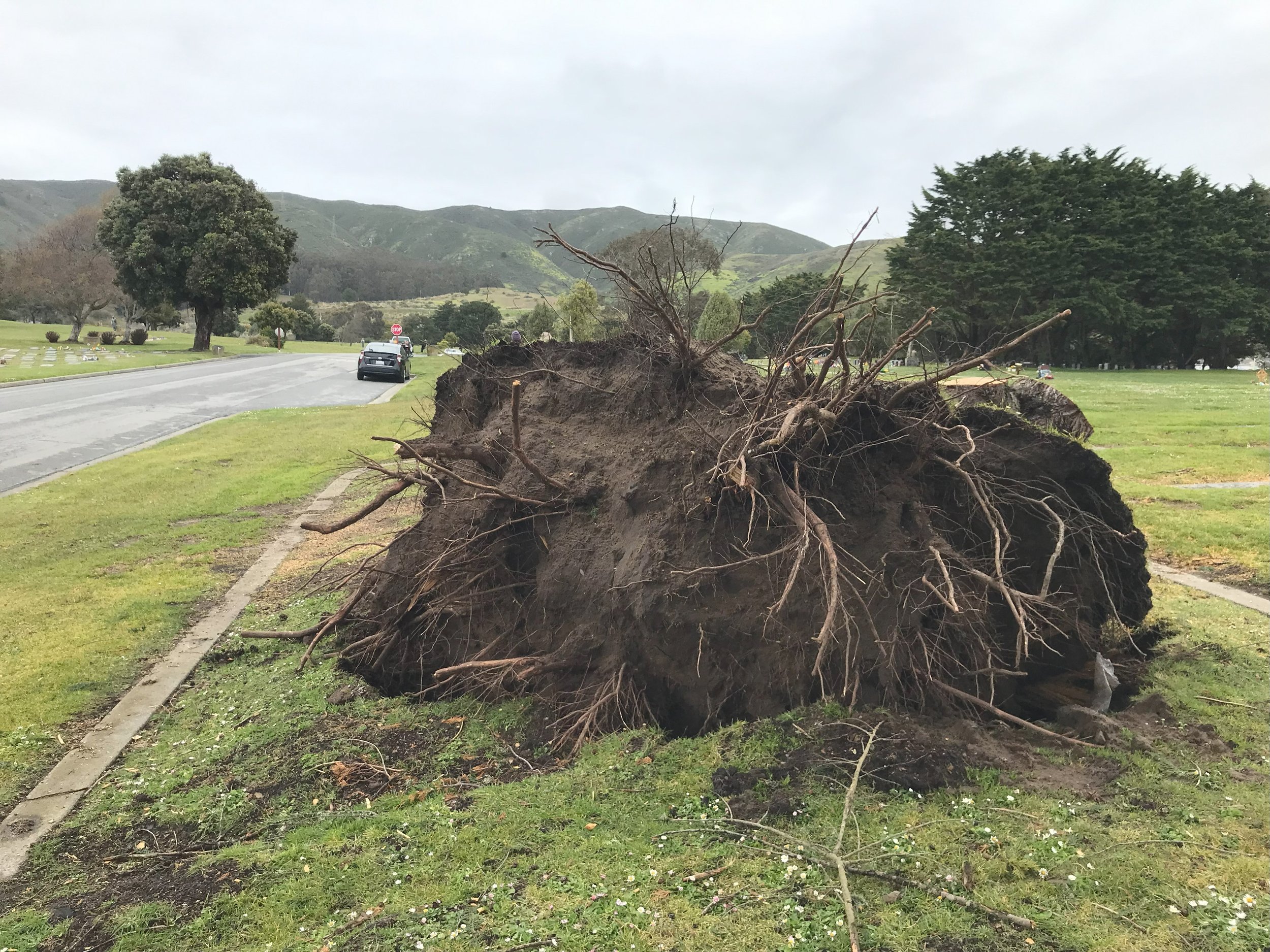
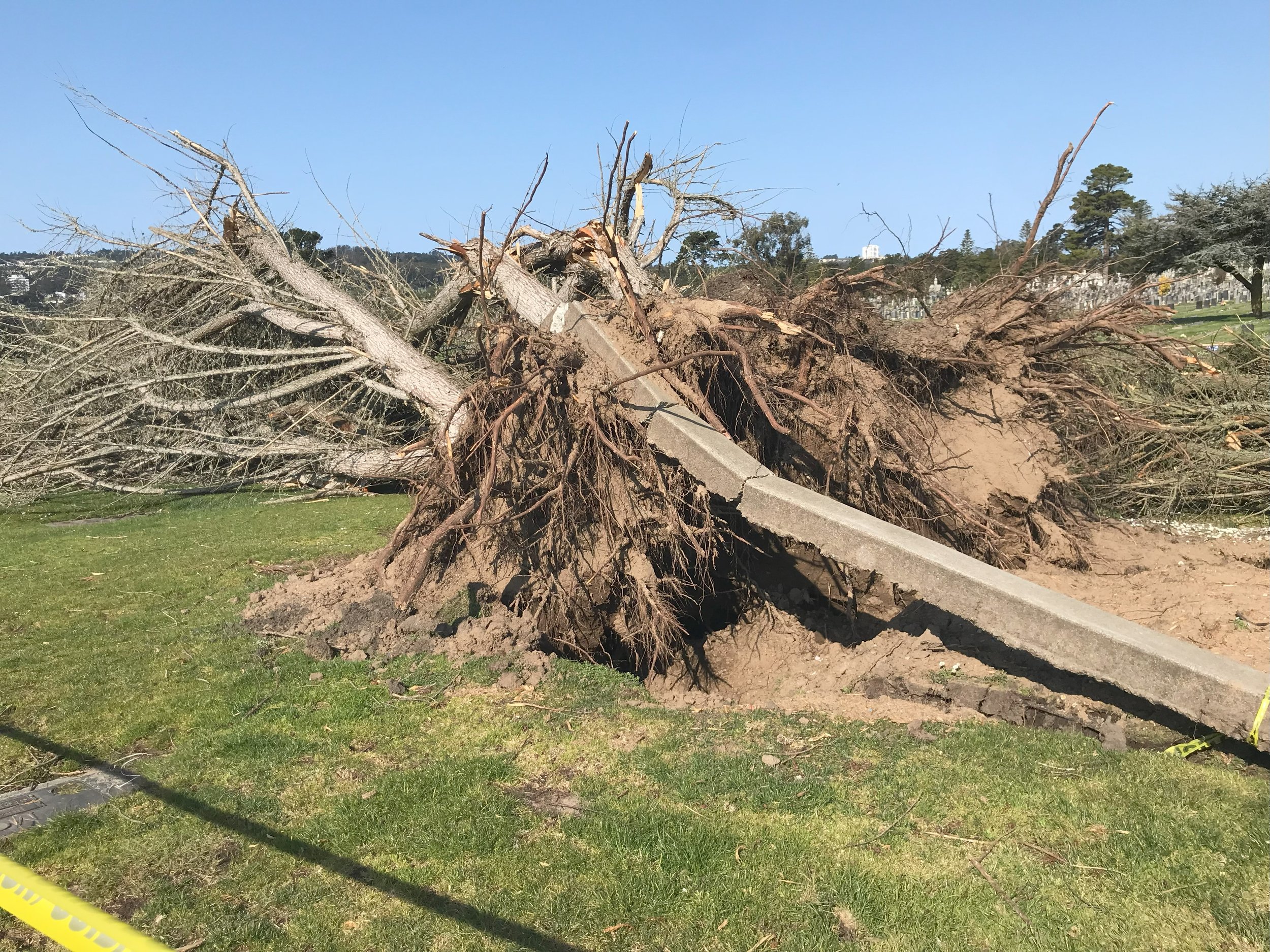
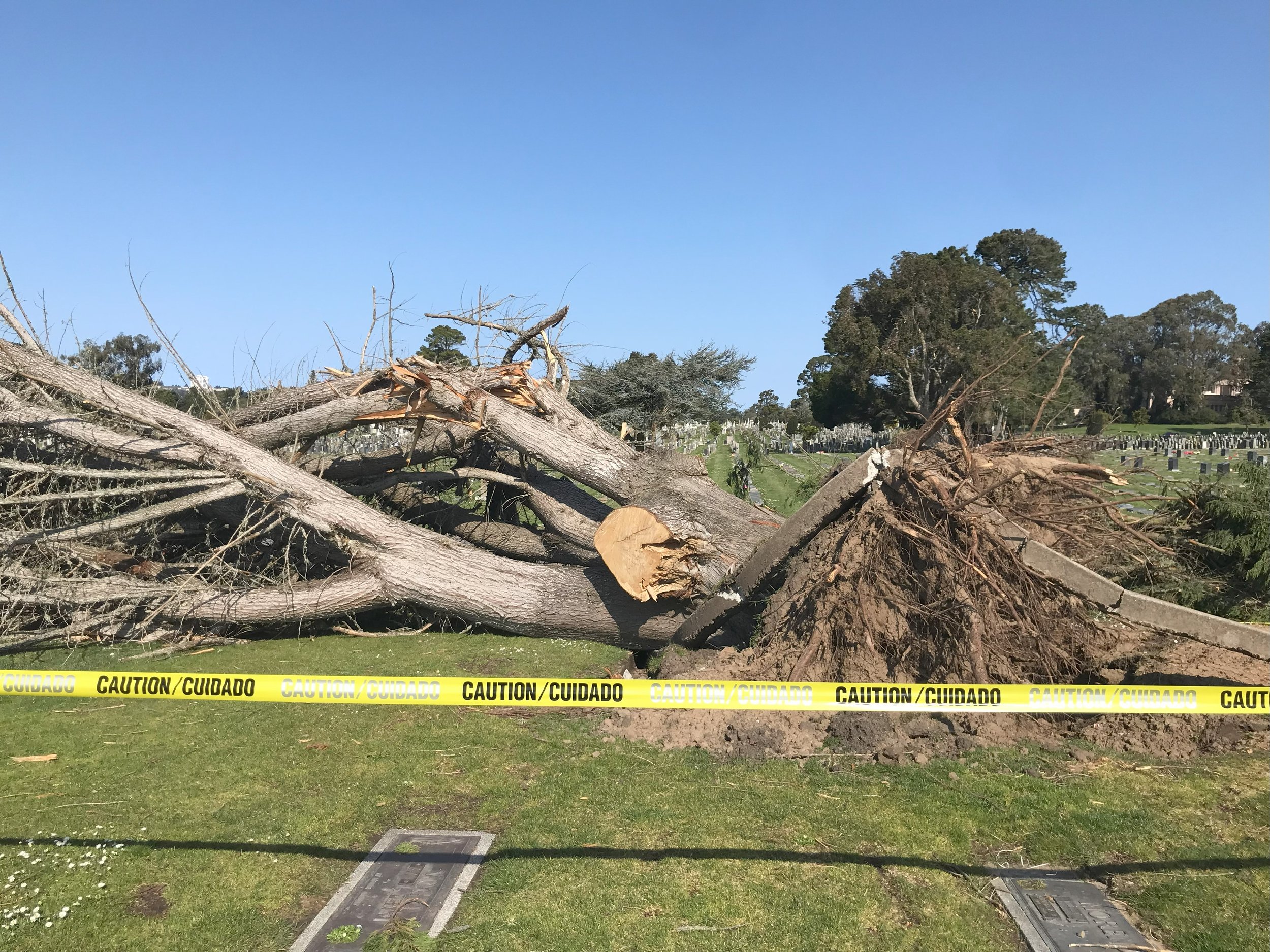
Life and death of a cypress tree that watched over my grandma’s funeral.


